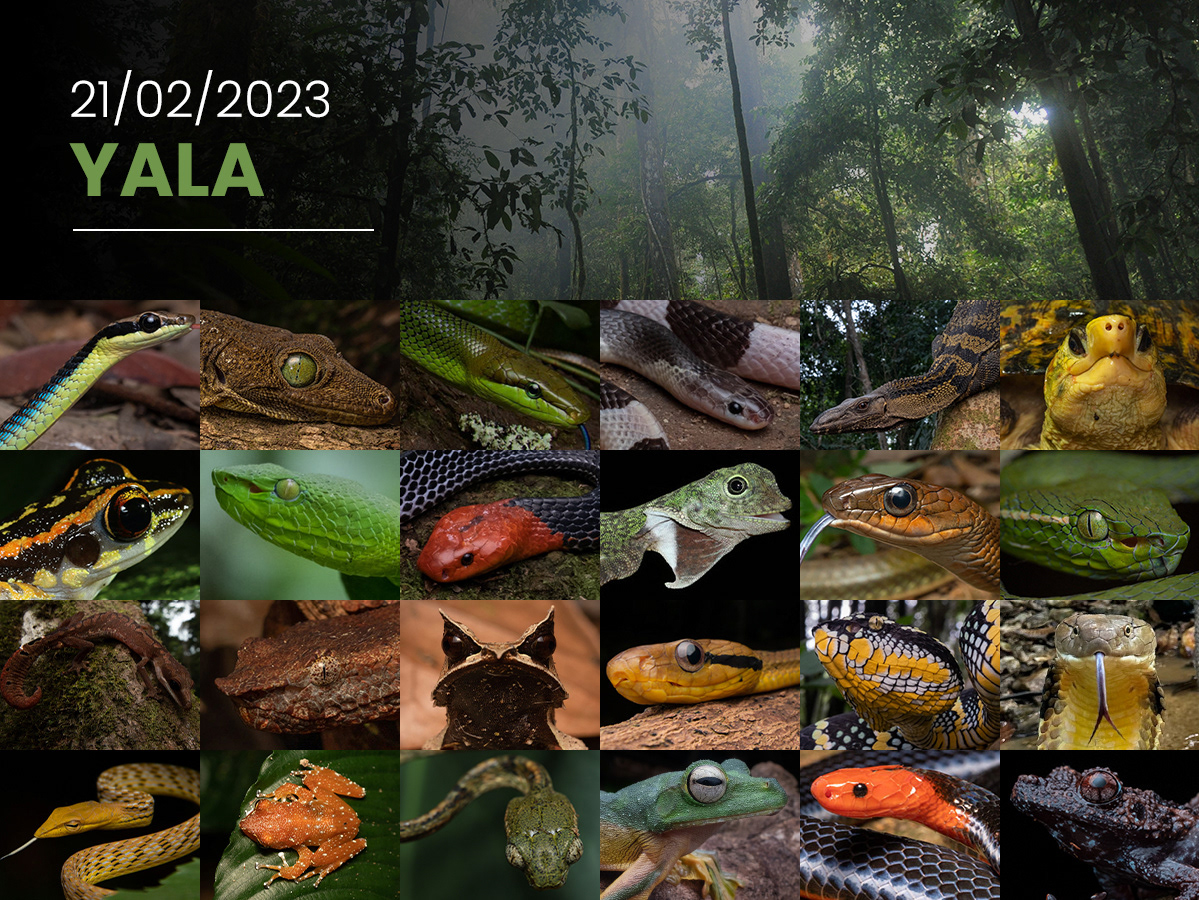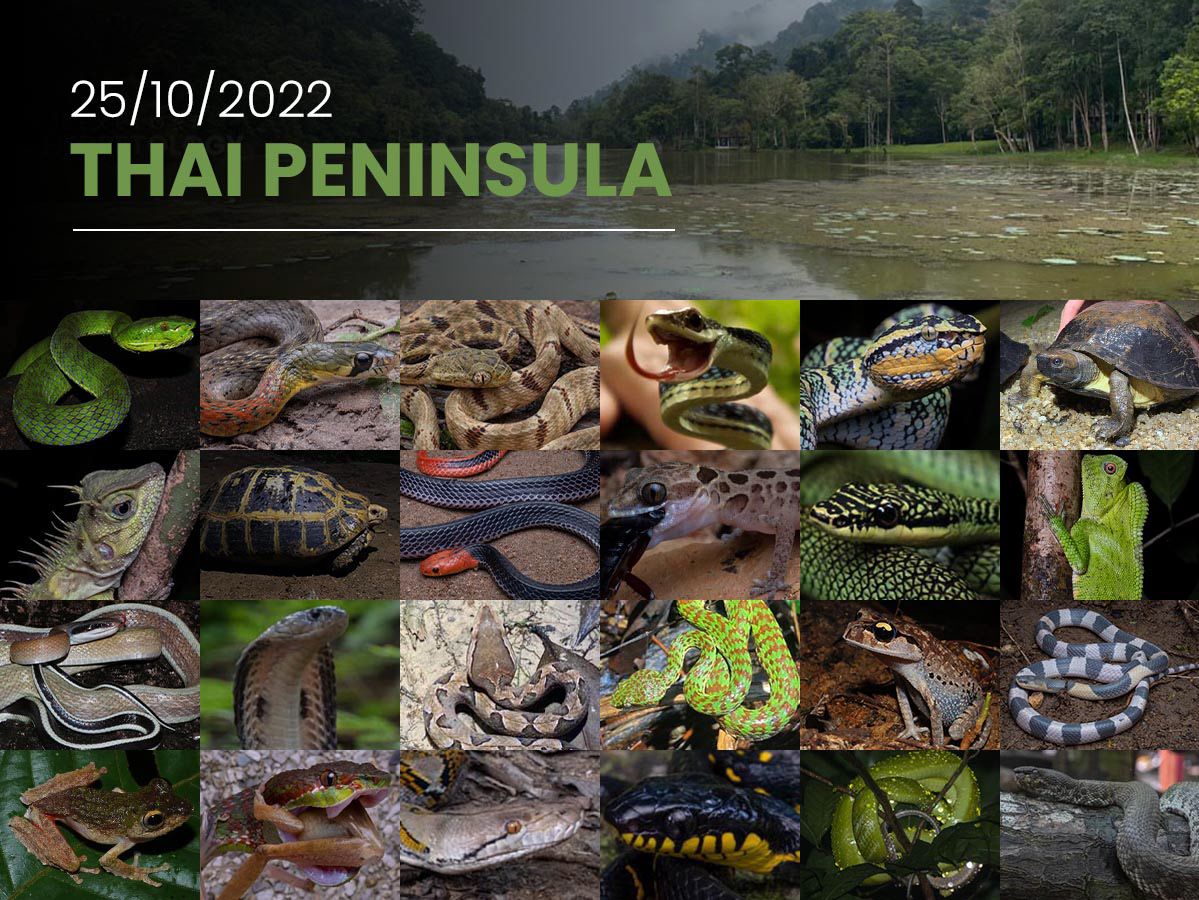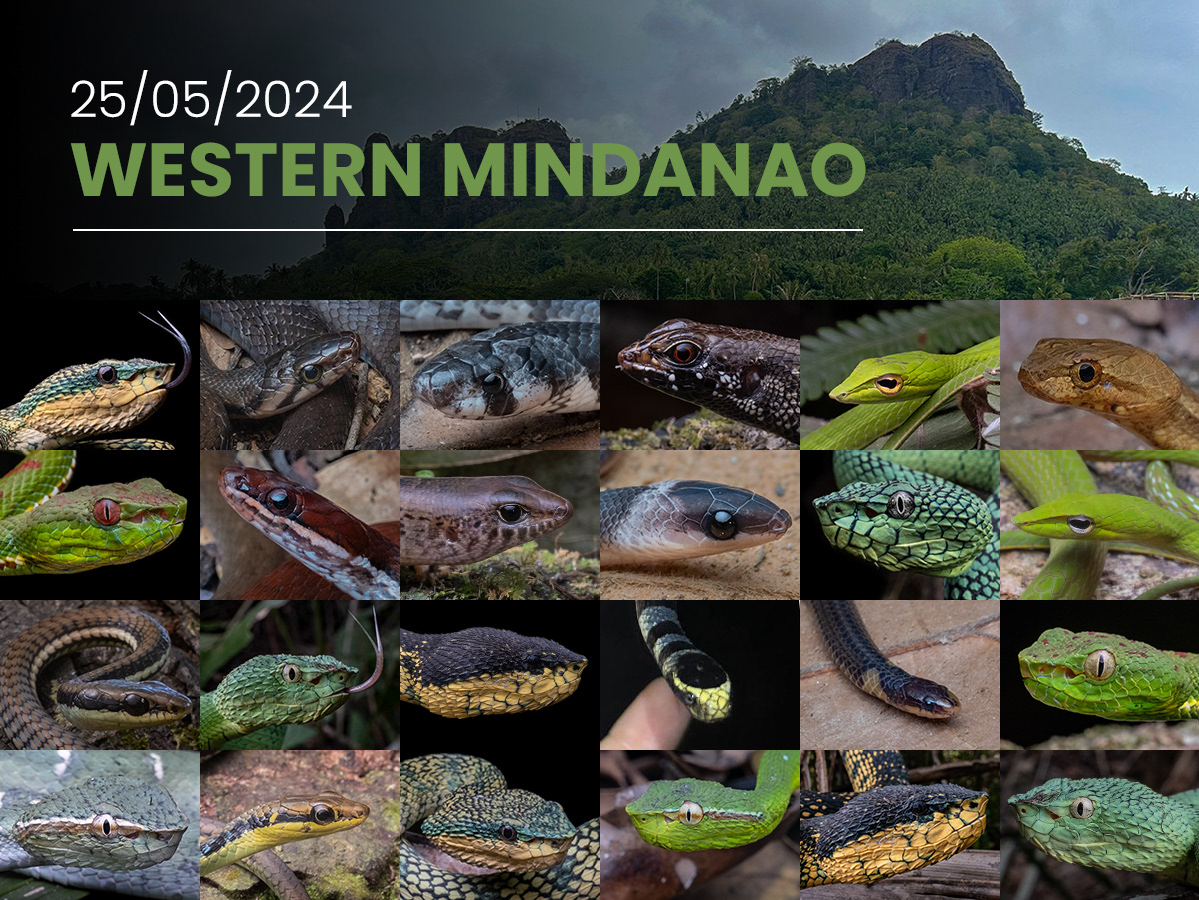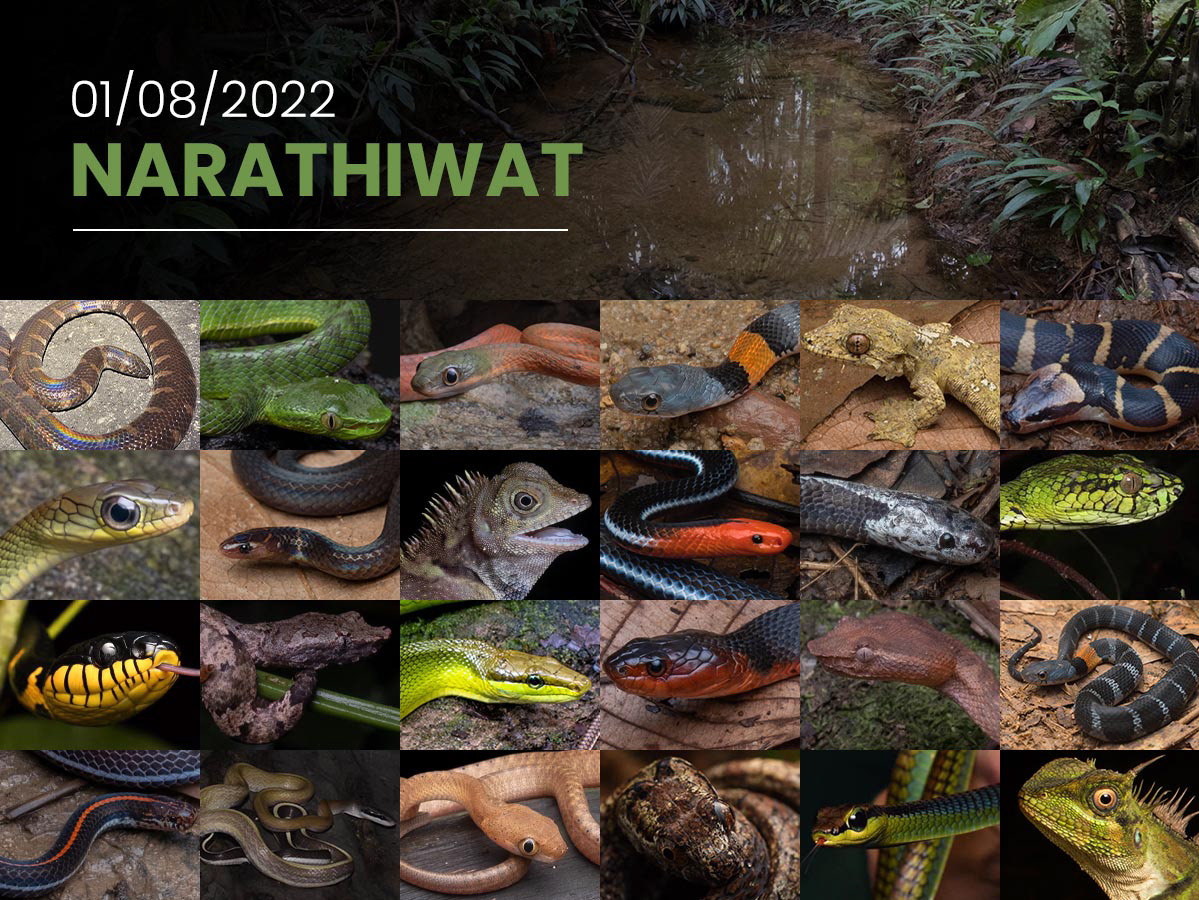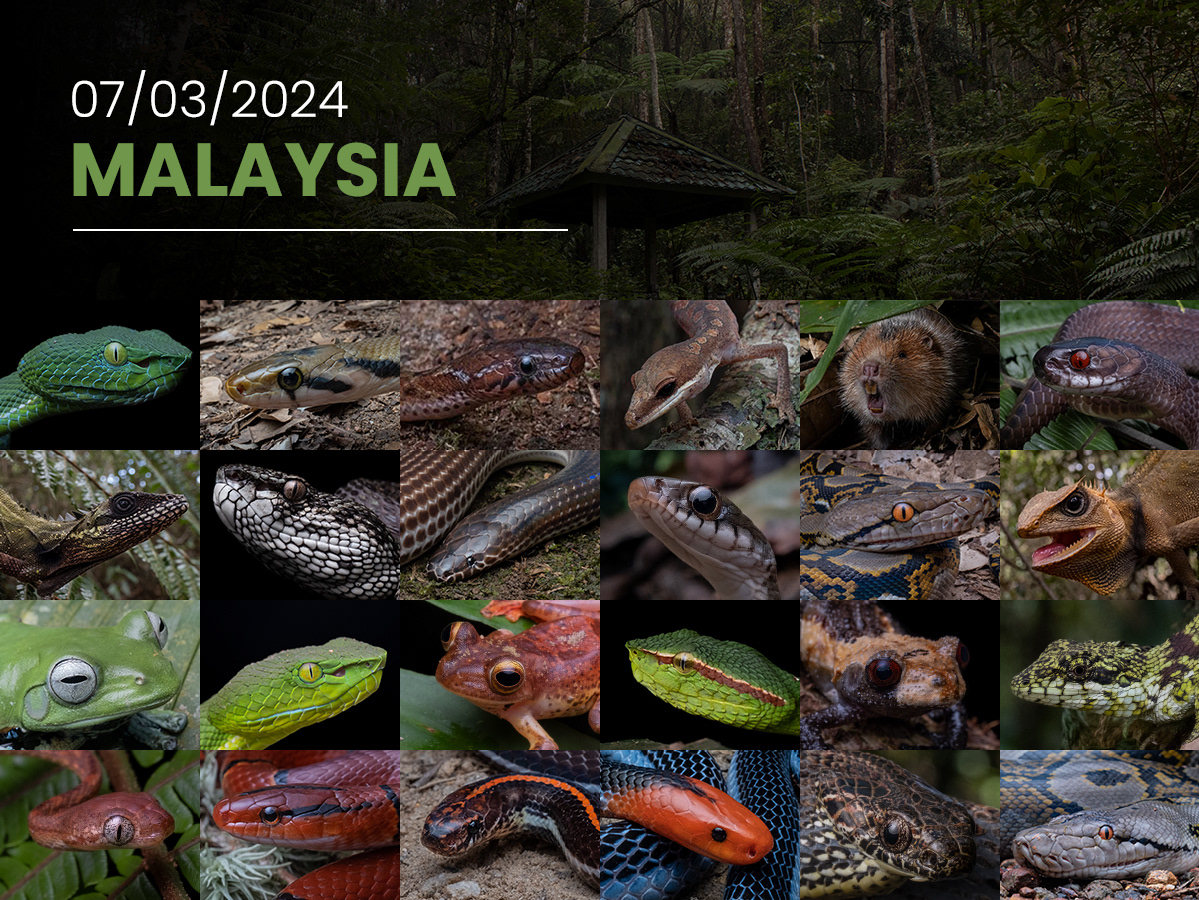Introduction
Our first Expedition Yala in February/March 2023 went down in history as possibly the most productive 10 day herping trip we have ever executed, so of course it had to return in 2024. Due to lunar cycles and other time constraints, we moved it forward to early February, leading to the driest weather conditions we have had on one of our expeditions. However, the south of Thailand is prolific throughout the year and expectations were as high as ever.
We also made a key change to the itinerary, swapping out the first night in Hat Yai for an additional night at our first location in Yala province, Than To. Than To had statistically been our most productive location in Southern Thailand for snake diversity per night over the previous 2 years, so increasing time here seemed like an obvious choice to improve the experience. Safe to say, this was a good call...
Than To
A fully booked Expedition Yala began with a meet and greet in Hat Yai, followed by some brief introductions and outlines for the 10 nights ahead. Then, it was immediately on to Yala province and Than To!
We arrived in Than To to blazing sunshine with barely a cloud in the sky, a consistent theme throughout the trip. Some daytime poking around our resort garden turned up nothing but a few common geckos, but it was a completely different story at night. Within minutes of arriving at our primary herping site, we road cruised a variable reed snake (Calamaria lumbricoidea), a dark-headed cat snake (Boiga nigriceps), a scarce wolf snake (Lycodon effraenis) and a juvenile golden-morph Sumatran cobra (Naja sumatrana). Getting a cobra within the first hour of the first night was simply incredible, let alone Thailand's rarest cobra species in the ultimate morph!
After this flurry of action, we parked and began hiking at a nice, wide stream with easy access due to low water levels. We caught a slender wolf snake (Lycodon albofuscus) almost instantly, followed by two blunt-headed slug snakes (Aplopeltura boa), a large Bengkulu cat snake (Boiga bengkuluensis) and a huge and beautiful white-bellied rat snake (Ptyas fusca). As if this was not successful enough already, further up the stream was yet another showstopper, a huge blood python (Python brongersmai) waiting in ambush on the rocks!
With it still being early in the night, we visited another nearby river which is regularly productive for both mangrove cat snake (Boiga melanota) and Malayan krait (Bungarus candidus). It took us only a few minutes of hiking to get a huge mangrove cat snake (Boiga melanota), while a surprise encounter was a stunning high-contrast dog-toothed cat snake (Boiga cynodon) which measured more than 2.5 meters in length. Along with snakes, we saw some jade flying frogs (Zhangixalus prominanus) around a breeding pond and a Wallace's flying frog (Rhacophorus nigropalmatus) which was sadly too high to photograph.
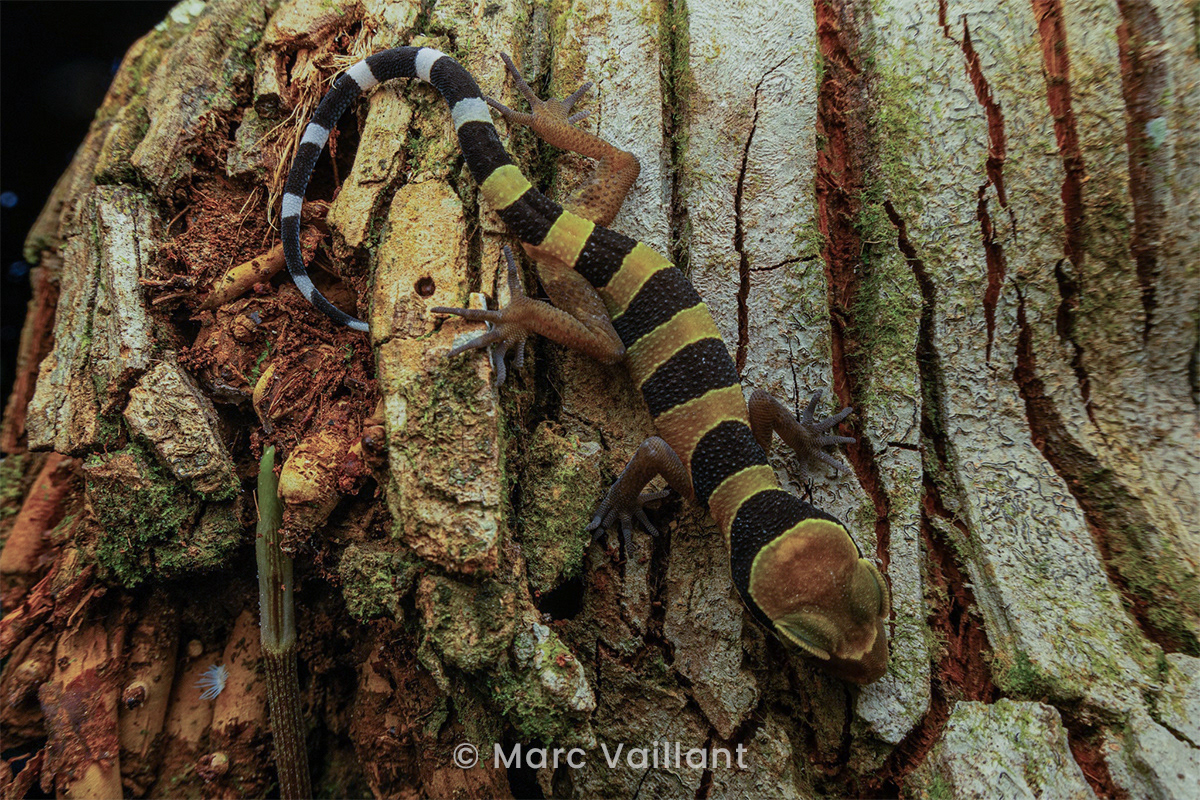
Large-tuberculed bent-toed gecko (Cyrtodactylus macrotubercalus) from our resort garden
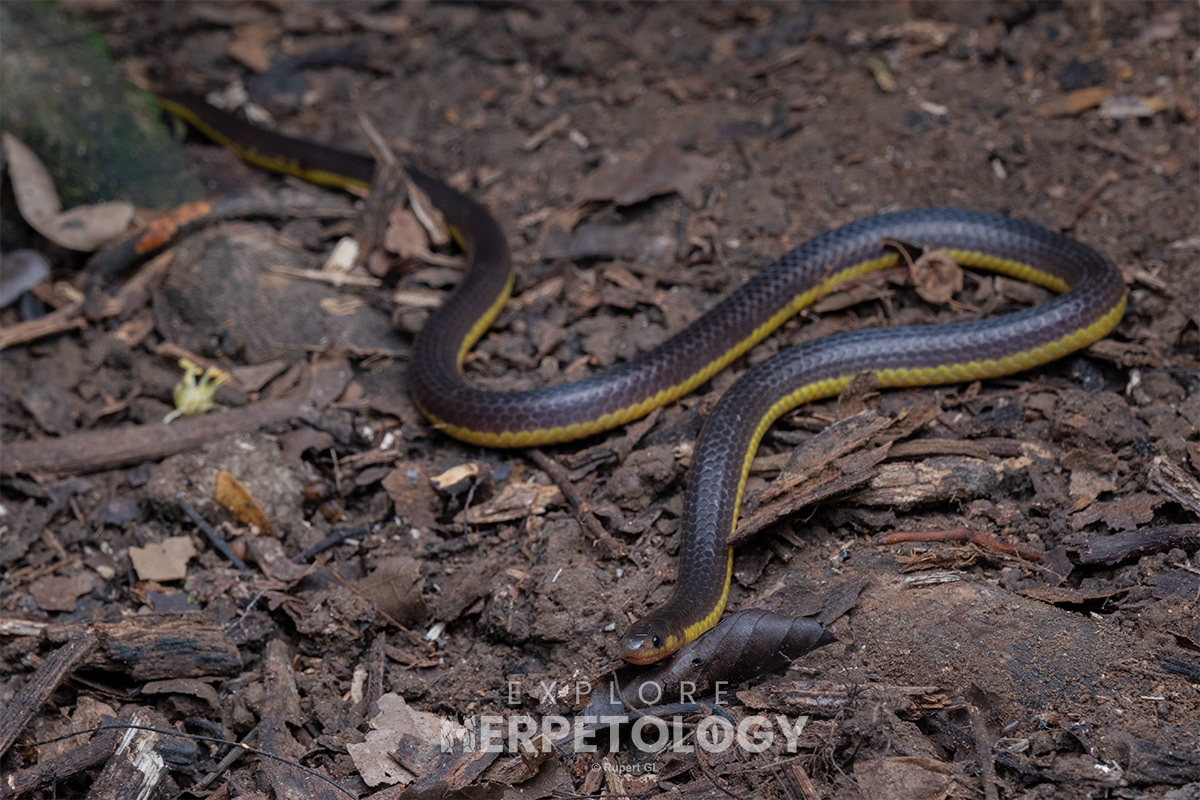
Variable reed snake (Calamaria lumbricoidea), the first snake seen on this expedition.
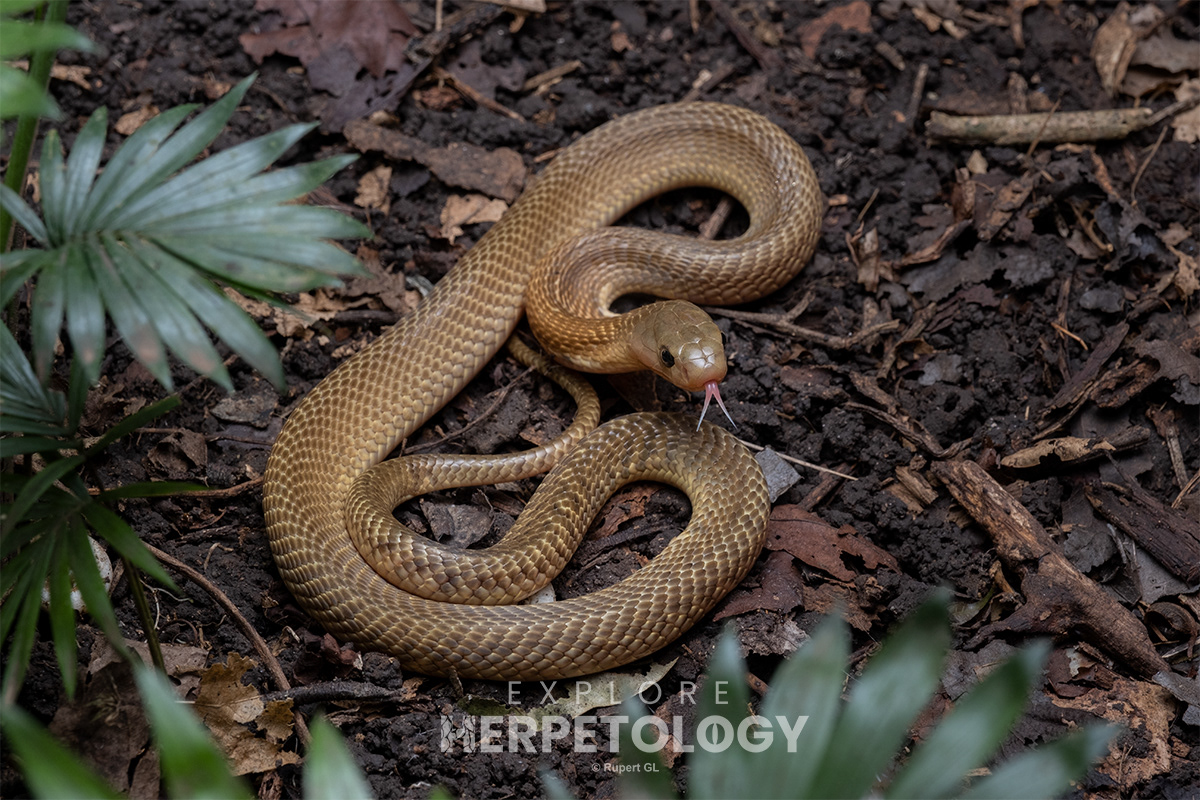
Juvenile Sumatran cobra (Naja sumatrana).
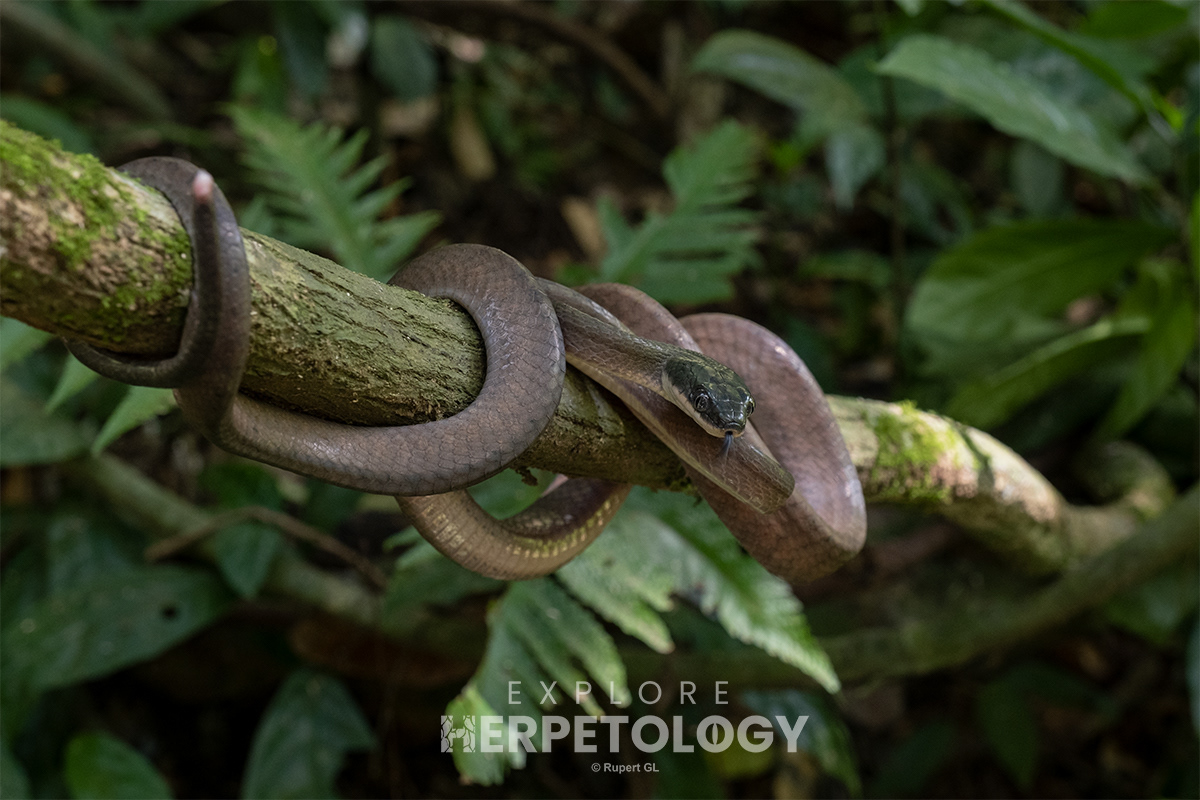
Dark-headed cat snake (Boiga nigriceps).
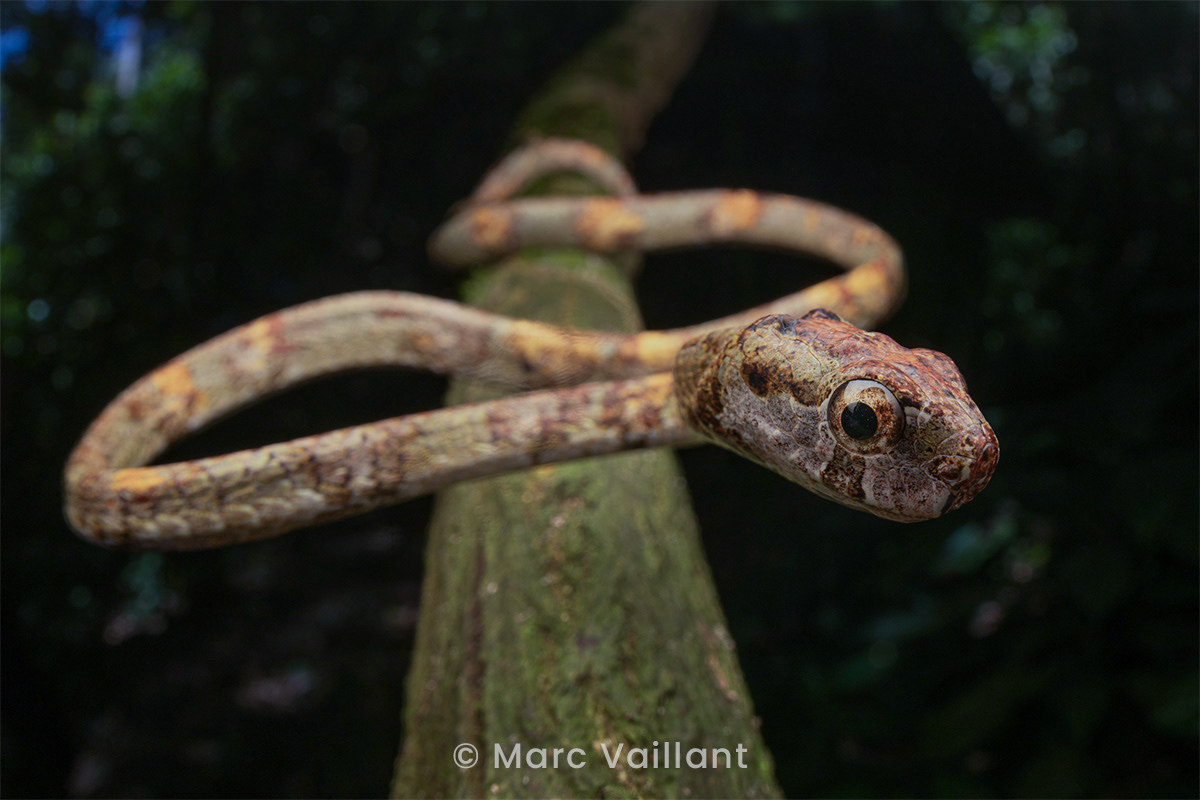
Blunt-headed slug snake (Aplopeltura boa).
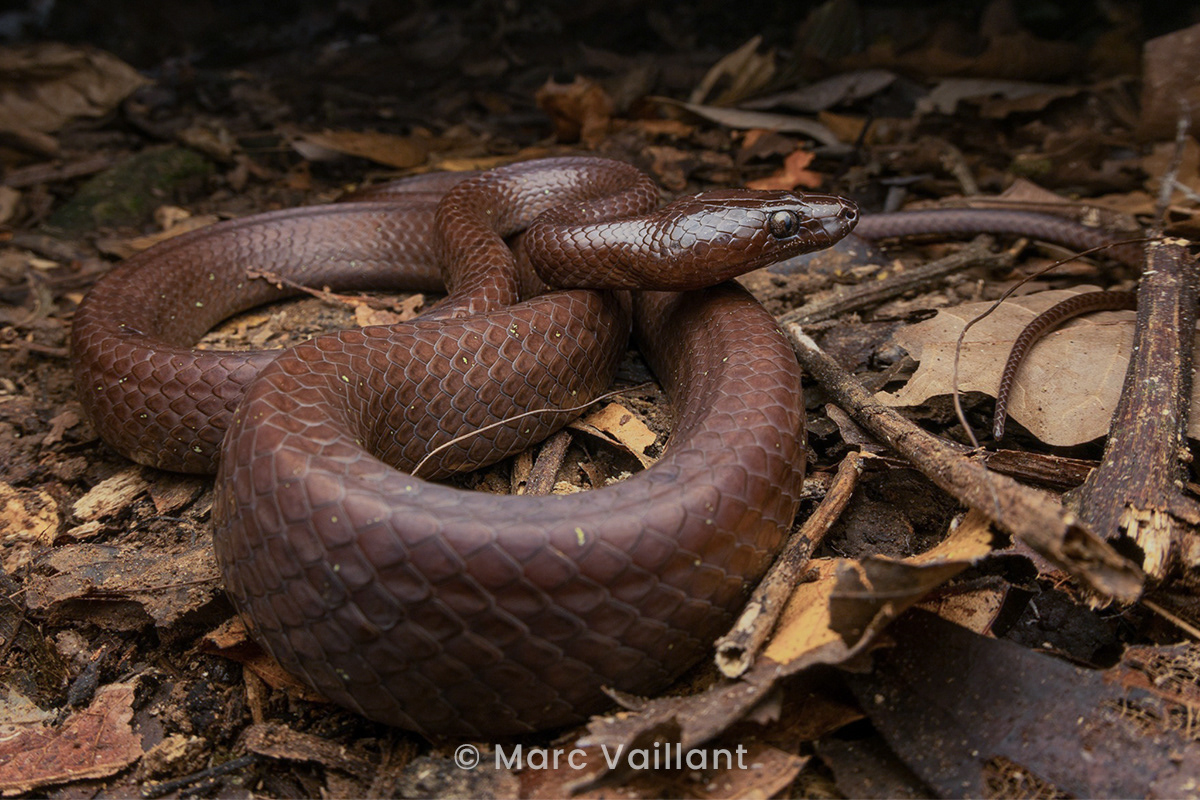
Scarce wolf snake (Lycodon effraenis).
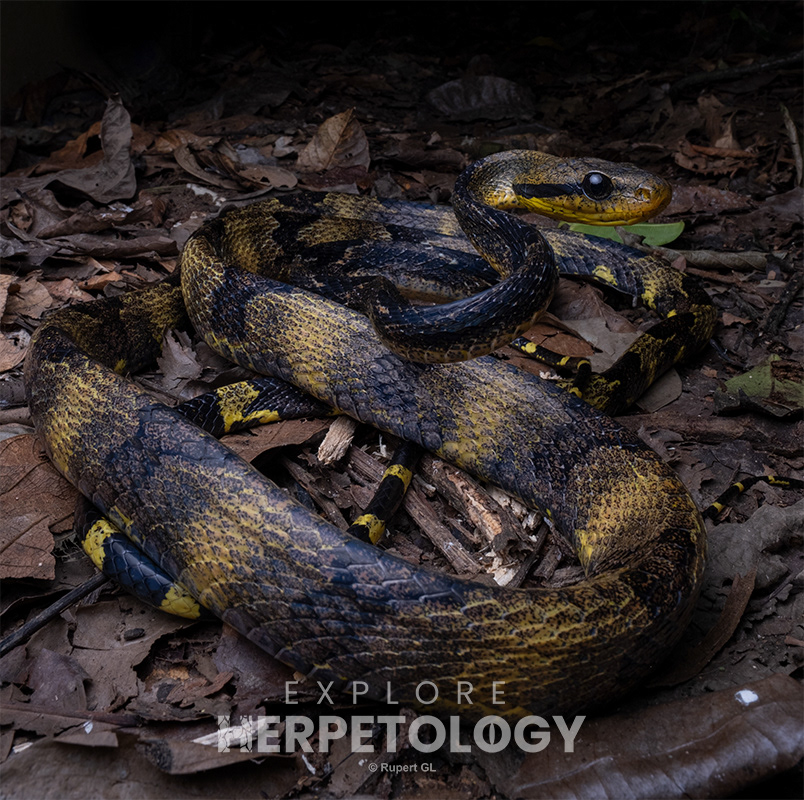
Dog-toothed cat snake (Boiga cynodon).

Mangrove cat snake (Boiga melanota)..
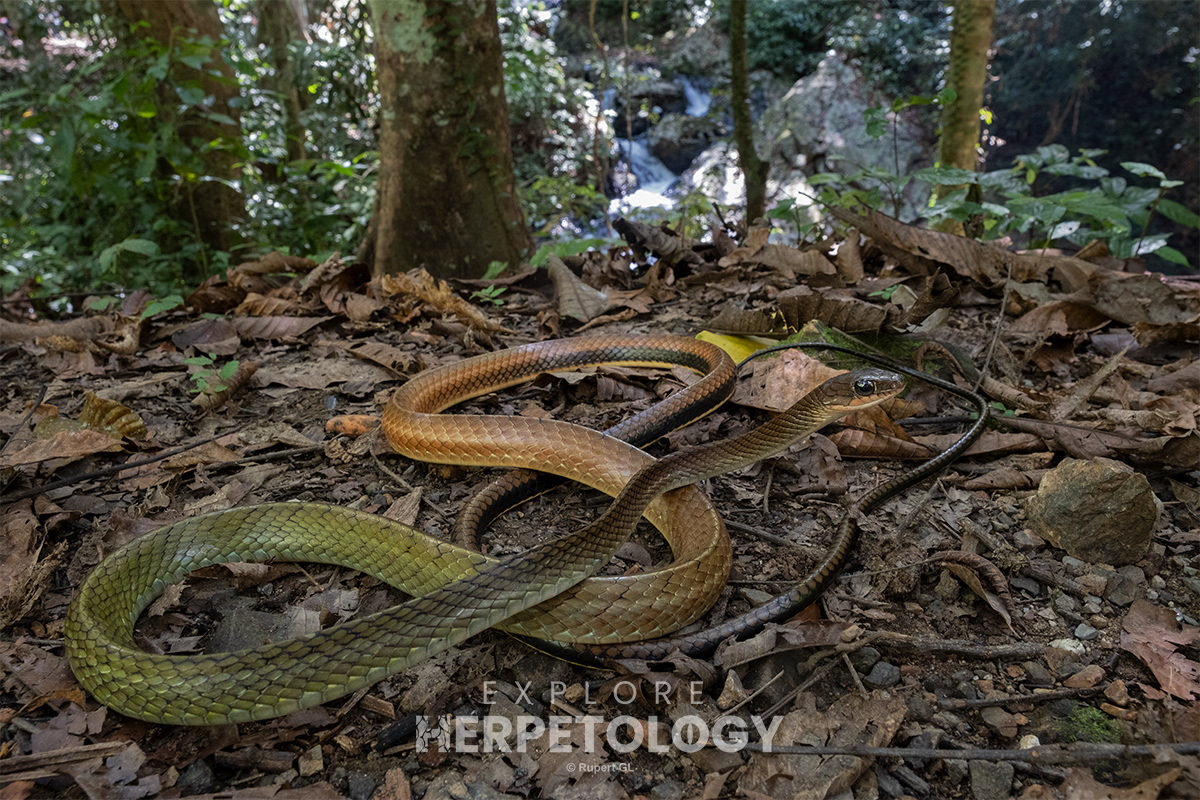
White-bellied rat snake (Ptyas fusca).
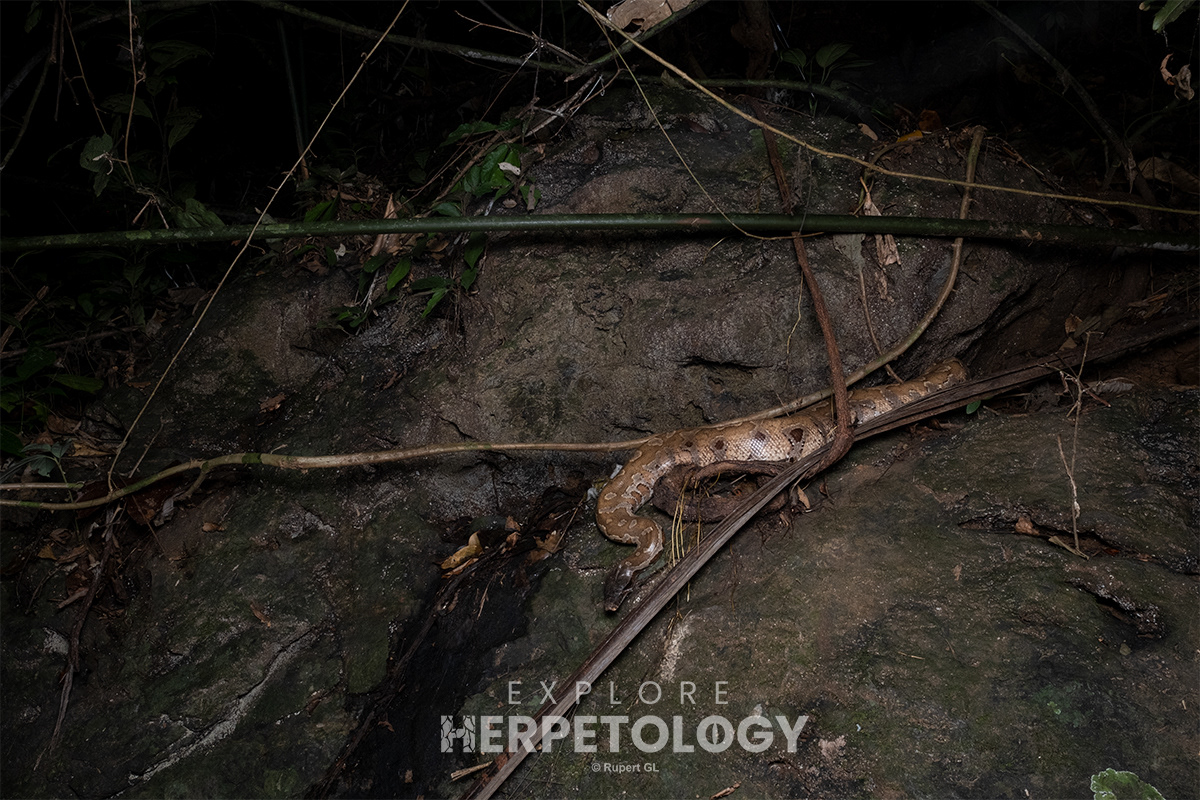
Blood python (Python brongersmai) in-situ.
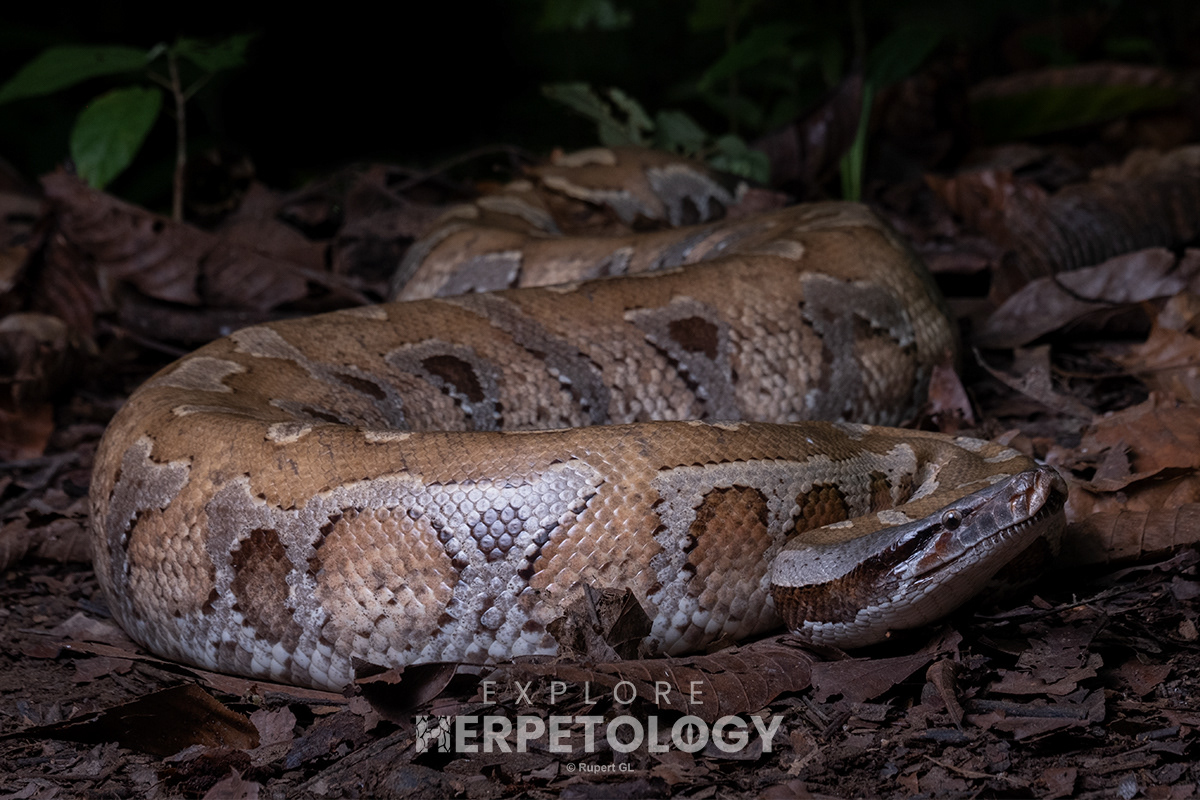
Blood python (Python brongersmai).
Daytimes were extremely slow for snakes during this trip due to the unrelenting sunlight and intense heat, but it gave us a great opportunity to see the stunning landscapes of Than To; towering limestone karst formations scattered amongst rolling hills of mixed plantations and tropical evergreen rain forest.
In the evening, we began just as we did the previous night with some road cruising and walking within a forested valley. Immediately, we one-upped our start to the previous night with an adult golden Sumatran cobra (Naja sumatrana)! A few keeled slug snakes (Pareas carinatus) appeared on the road, along with a giant white-spotted cat snake (Boiga drapiezii). Once on foot, the Hagen's pit vipers (Trimeresurus hageni) which had been absent the night before were suddenly everywhere, and we saw a juvenile, a few males and a decent-sized adult female. More herping in this particular area turned up another Bengkulu cat snake (Boiga bengkuluensis) and blunt-headed slug snake (Aplopeltura boa), a sunbeam snake (Xenopeltis unicolor) and a Schlegel's reed snake (Calamaria schlegeli). While herping higher up on the road, we also located a male Wagler's pit viper (Tropidolaemus wagleri) and a Malayan striped racer (Coelognathus flavolineatus).
Another great night, we returned to the resort early and most people went to bed. Having never herped in the resort garden by night, Rupert and David went for a walk along the adjacent limestone karst formation and located a young elegant bronzeback (Dendrelaphis formosus), shortly followed by the overwhelmingly beautiful and extremely rare Kopstein's bronzeback (Dendrelaphis kopsteini). As if this wasn't enough, Rupert then spotted a small but strikingly colourful Malaysian blue coral snake (Calliophis bivirgata) only around 20 meters from the bungalows. A simply astonishing end to one of the best nights of herping we ever had, with a total of 13 species of snake observed along with 3 'showstoppers'.
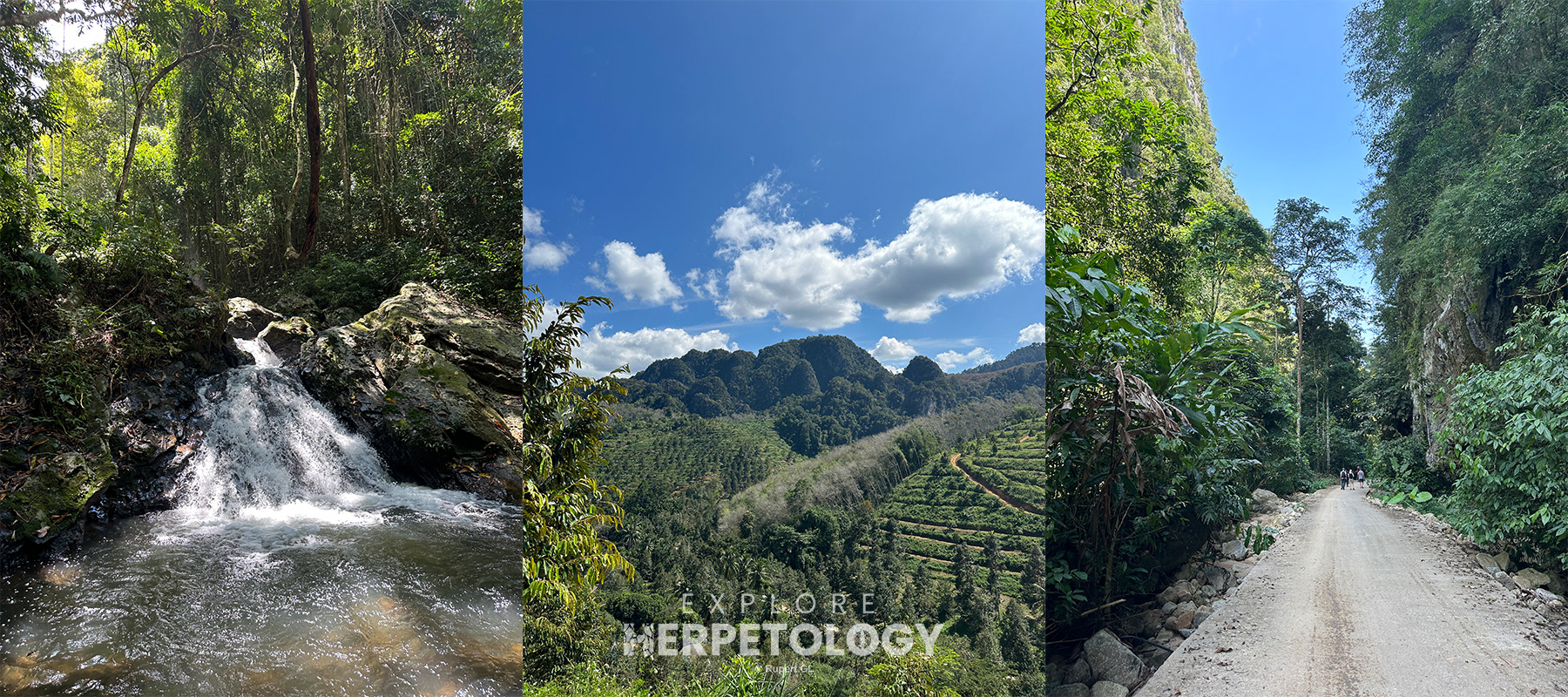
Landscapes around Than To, Yala.
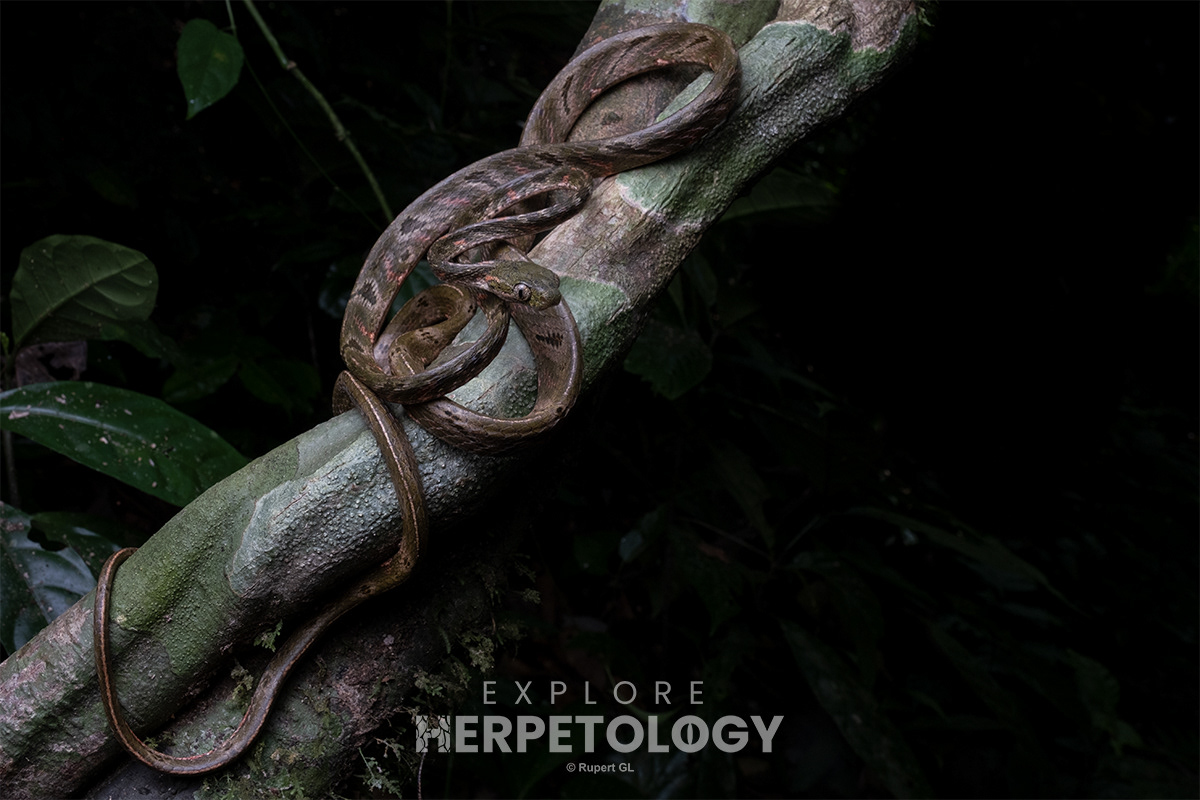
Bengkulu cat snake (Boiga bengkuluensis).
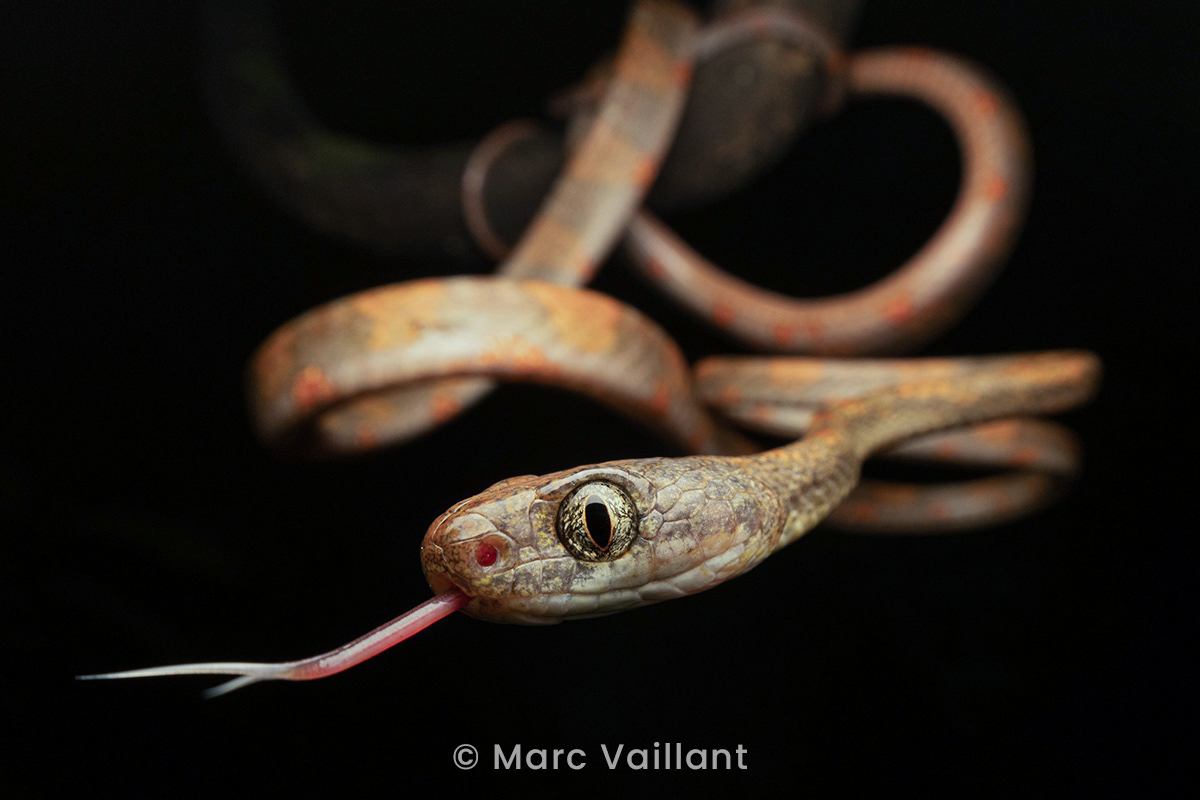
White-spotted cat snake (Boiga drapiezii).

Keeled slug snake (Pareas carinatus).
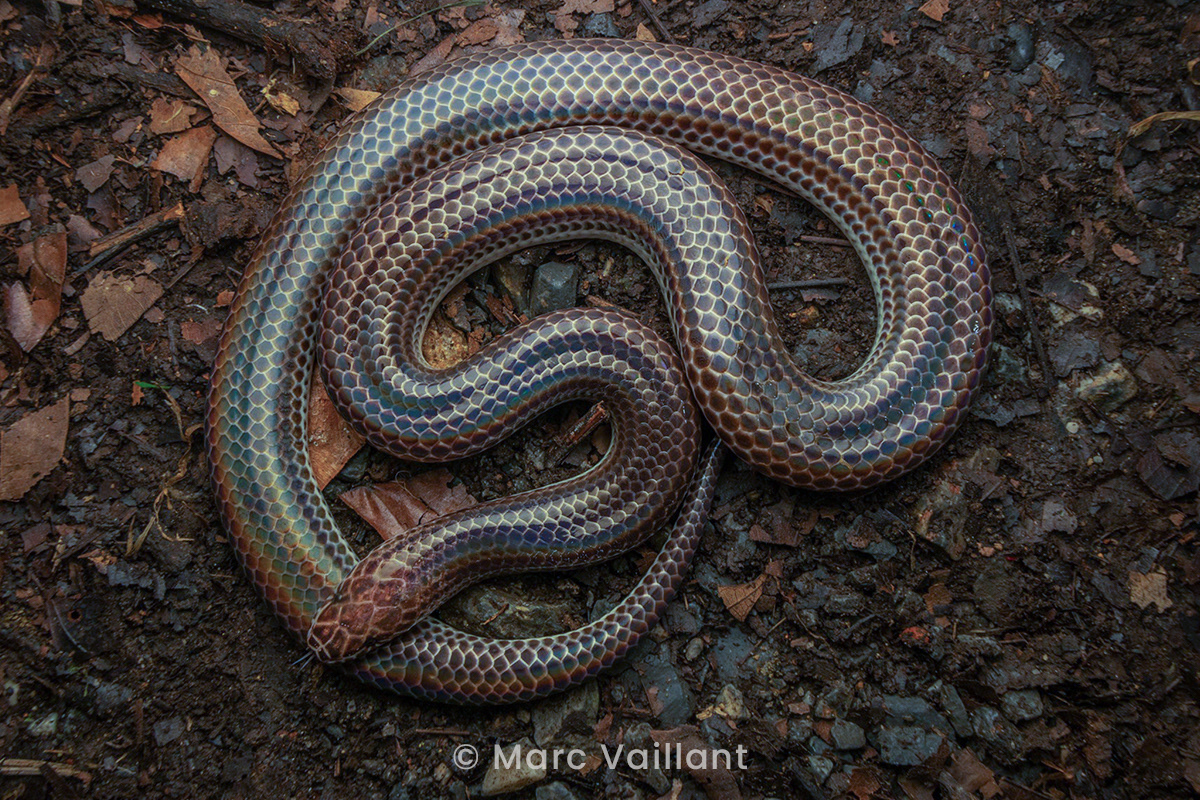
Sunbeam snake (Xenopeltis unicolor).

Hagen's pit viper (Trimeresurus hageni).
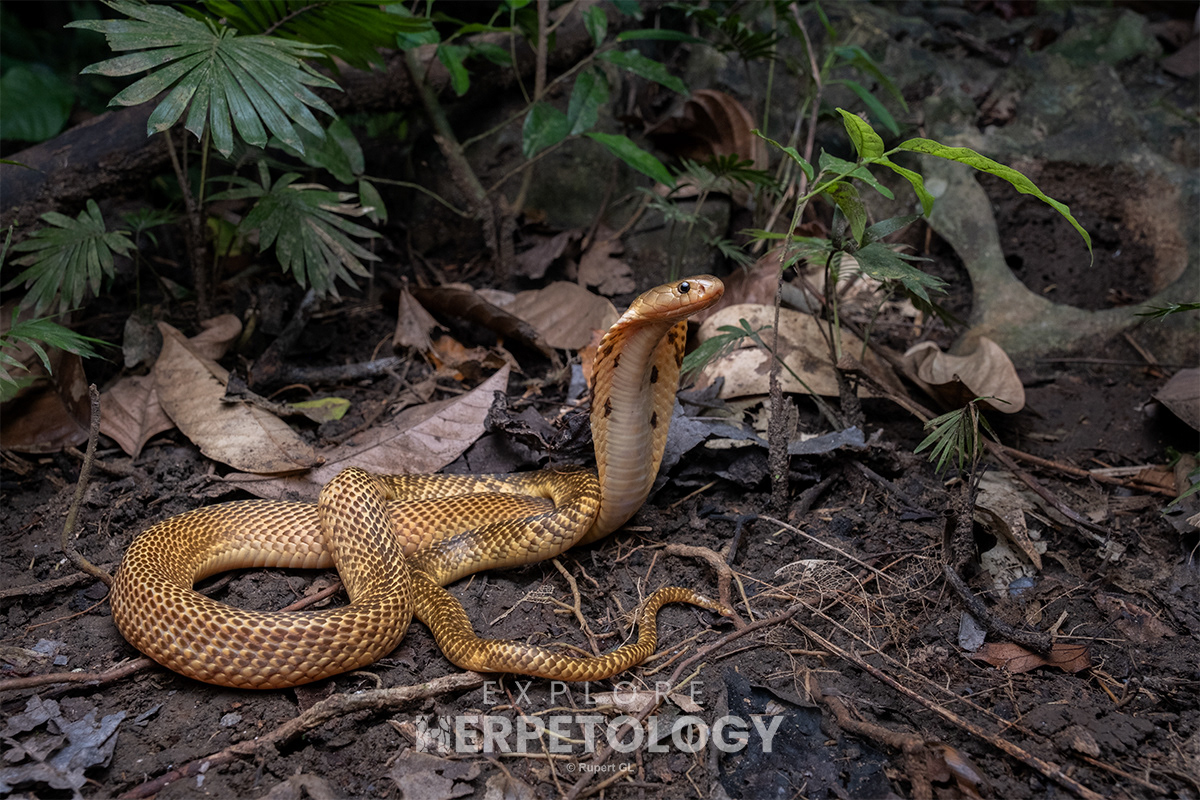
Sumatran cobra (Naja sumatrana).
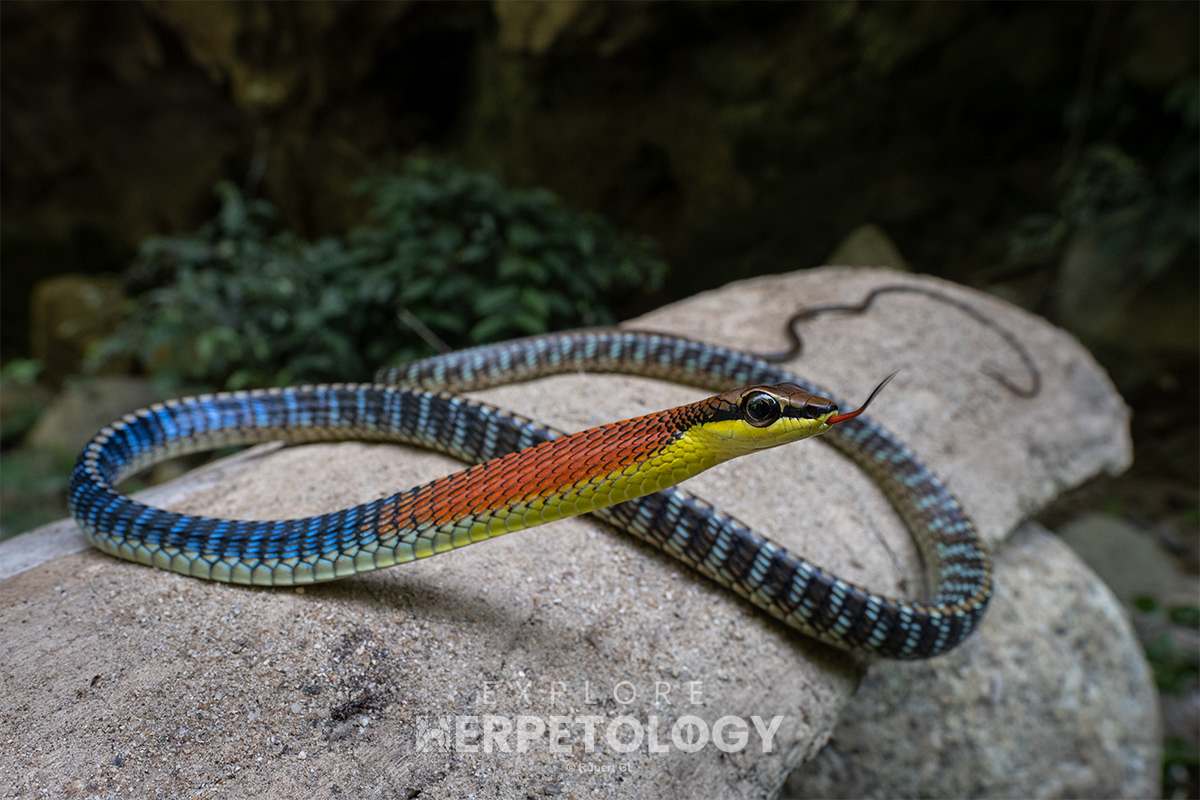
Kopstein's bronzeback (Dendrelaphis kopsteini).
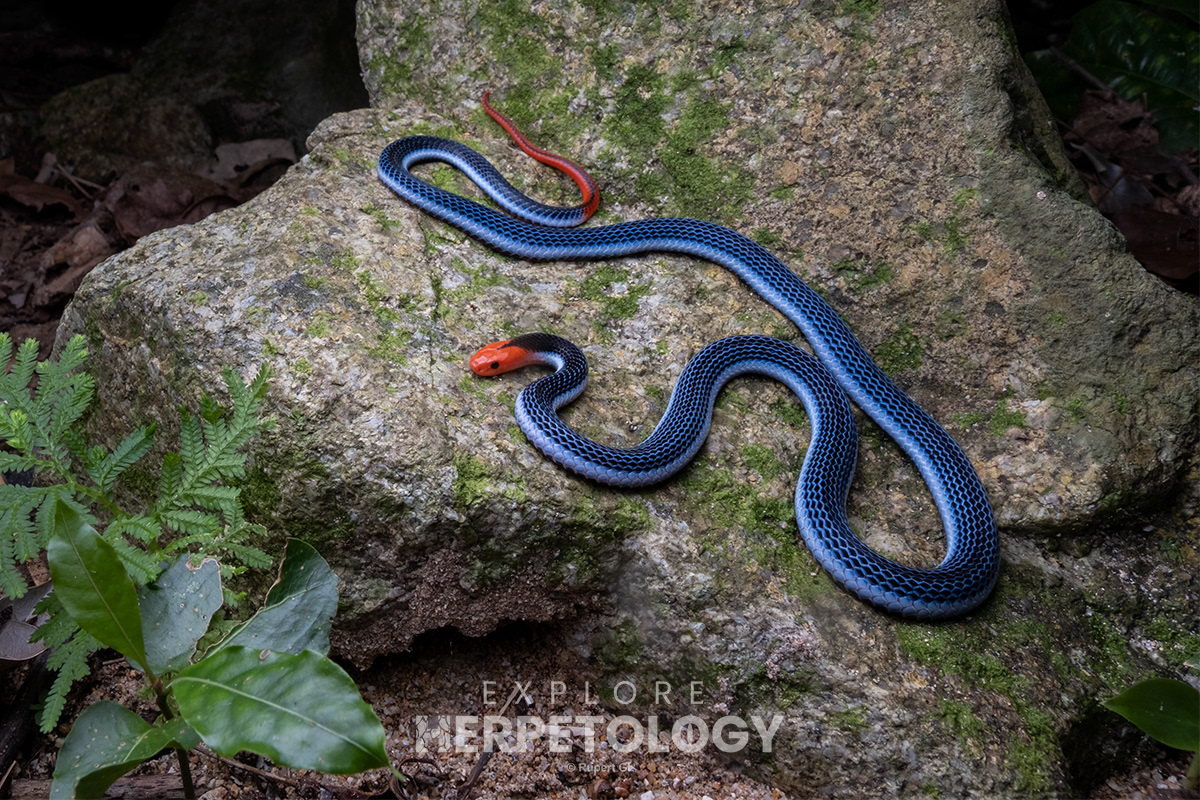
Blue coral snake (Calliophis bivirgata).
When something ain't broken, don't fix it. Hereby, we laid out our plan for night 3 just like the previous two night. Once again, road cruising turned up something extremely special in the first few minutes, this time a very rare Dumeril's monitor lizard (Varanus dumerilii). Another dog-toothed cat snake (Boiga cynodon), Malayan racer (Coelognathus flavolineatus) and some more Hagen's pit vipers (Trimeresurus hageni) also showed up on the road.
While hiking along streams and trails at the river, we encountered the same high contrast Boiga cynodon as on the first night, a keeled slug snake (Pareas carinatus), one bengkulu cat snake (Boiga bengkuluensis) and a rusty-barred kukri snake (Oligodon signatus) which tore a small chunk of flesh out of Rupert's hand. As if one encounter with a blood python (Python brongersmai) in bone dry weather wasn't strange enough, a second individual showed up right in the middle of the trail, actively moving around the forest. A huge long-nosed horned frog (Pelobatrachus nasuta) and a cute Malayan softshell turtle (Dogania subplana) added to the fun, while another Schlegel's reed snake (Calamaria schlegeli) showed up next to our bungalows when we returned to the resort.

Dumeril's monitor (Varanus dumerilii).
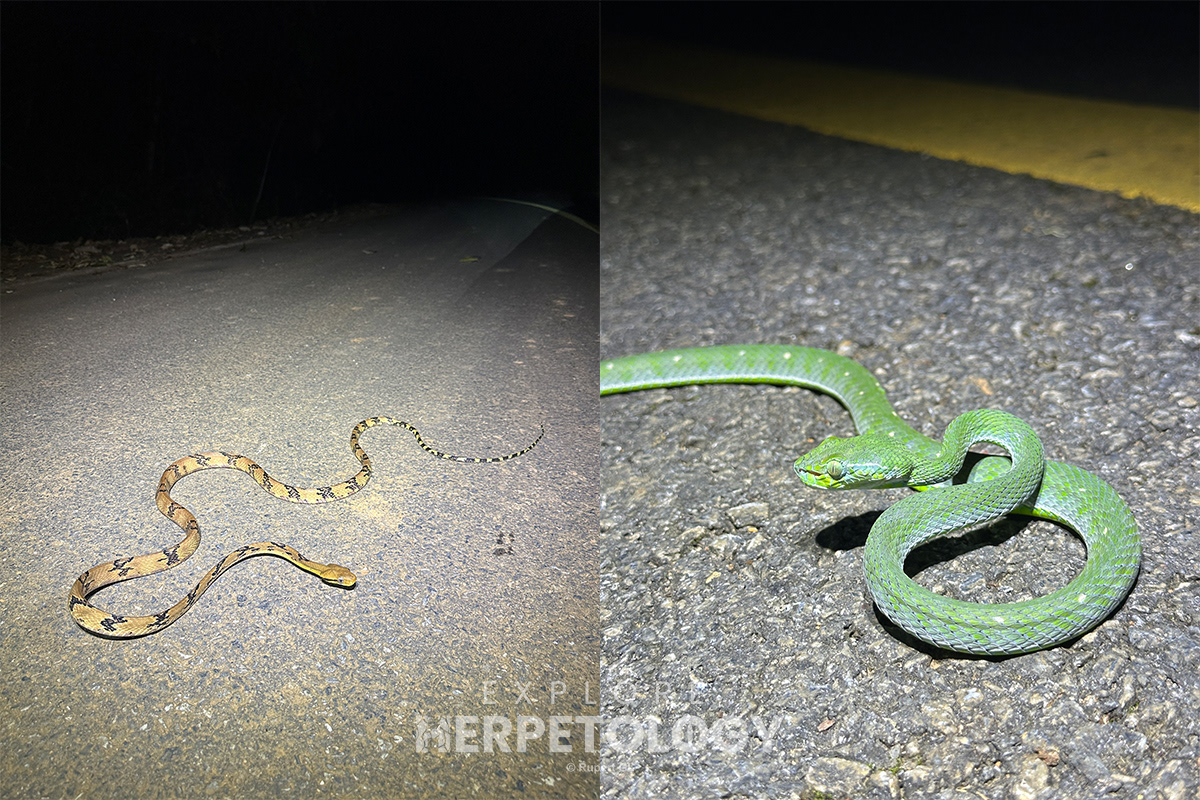
Left: Boiga cynodon. Right: Trimeresurus hageni

Long-nosed horned frog (Pelobatrachus nasuta).
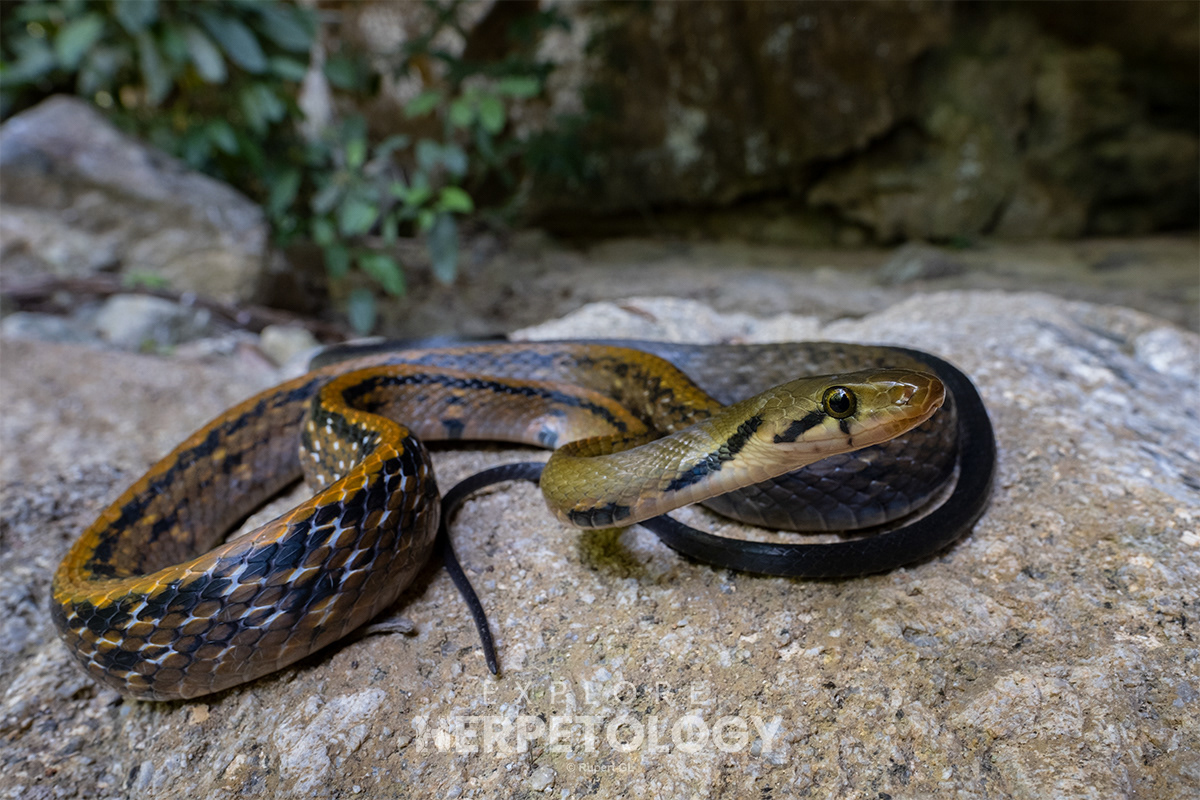
Malayan striped racer (Coelognathus flavolineatus).
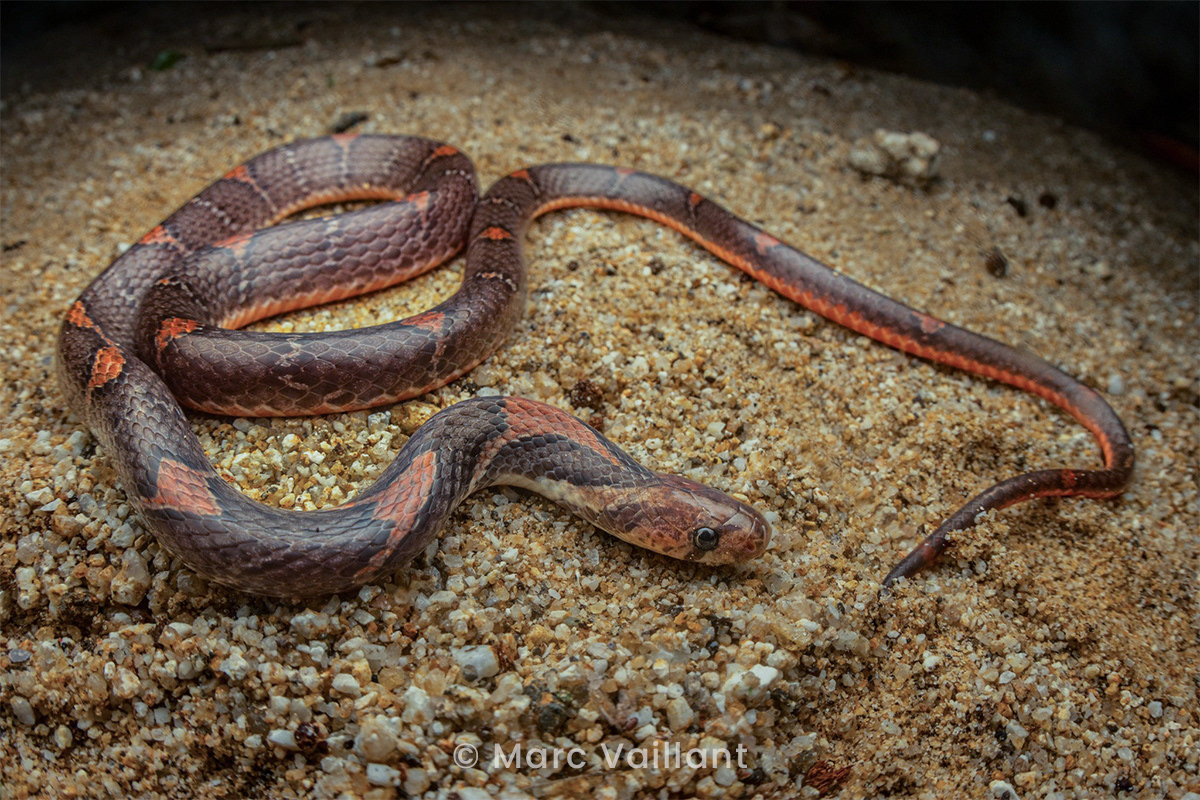
Rusty-barred kukri snake (Oligodon signatus).
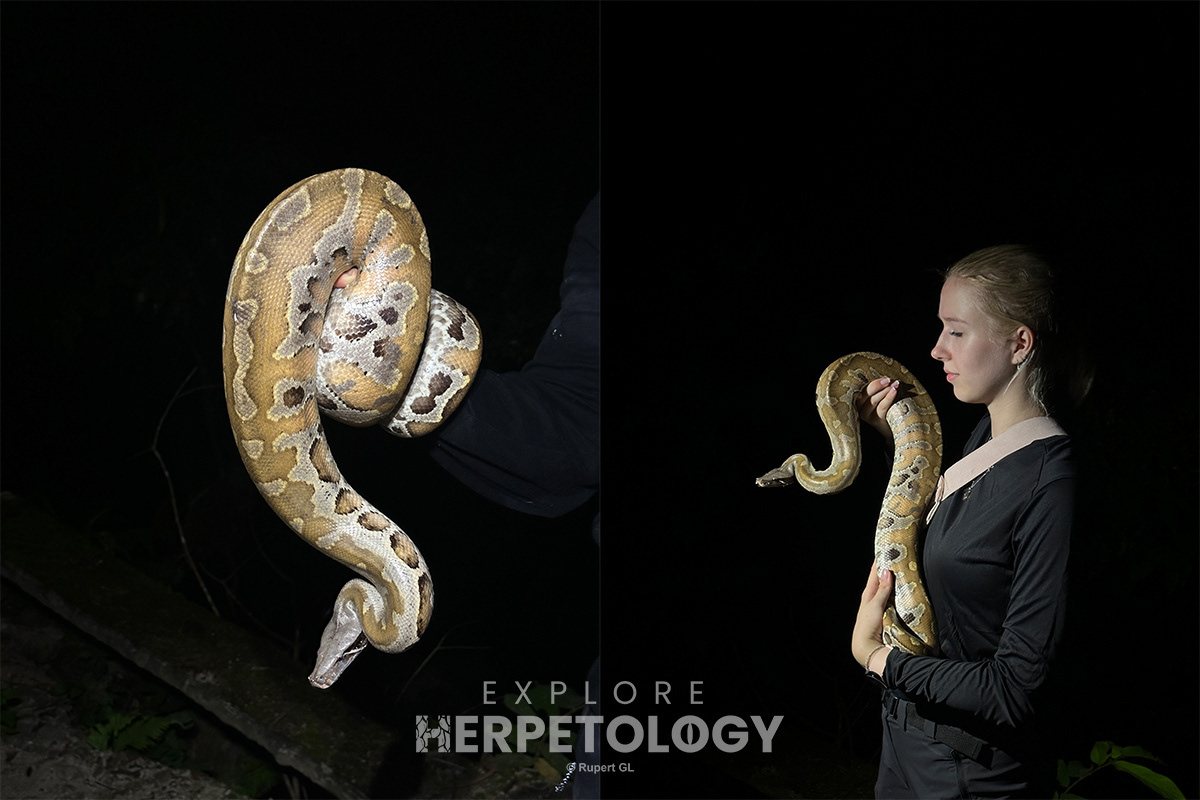
Blood python (Python brongersmai).
Betong
After what was undoubtedly our best start to an expedition, we headed to the highlands of Betong where snakes are traditionally much harder to come by. The typically cool weather we enjoy here wasn't present either, with harsh sunlight beating down all day long. We saw a huge DOR (dead on road) Sumatran cobra (Naja sumatrana) on the drive up, but it wasn't until sunset that we got our first snake, a speckle-bellied keelback (Rhabdophis chrysargos) crossing the road.
We went on to see many more species this night, with new additions being a mountain slug snake (Pareas cf. macularius), white-spotted slug snake (Pareas margaritophorus), oriental vine snake (Ahaetulla prasina) and white-banded wolf snake (Lycodon subcinctus). Some repeat species included mangrove cat snake (Boiga melanota), sunbeam snake (Xenopeltis unicolor), Bengkulu cat snake (Boiga bengkuluensis) and white-spotted cat snake (Boiga drapiezii). Calamaria schlegeli is the most common species here and we see several per night, especially around the bungalows.
After being totally spoiled for the previous 4 nights, our 5th night (and 2nd in Betong) felt a lot slower. We got two rusty-barred kukri snakes (Oligodon signatus) as well as a truly beautiful scarce wolf snake (Lycodon effraenis), along with a smattering of other repeat species.

Highlands of Betong, stretching into the Ulu Muda forest complex in Malaysia.
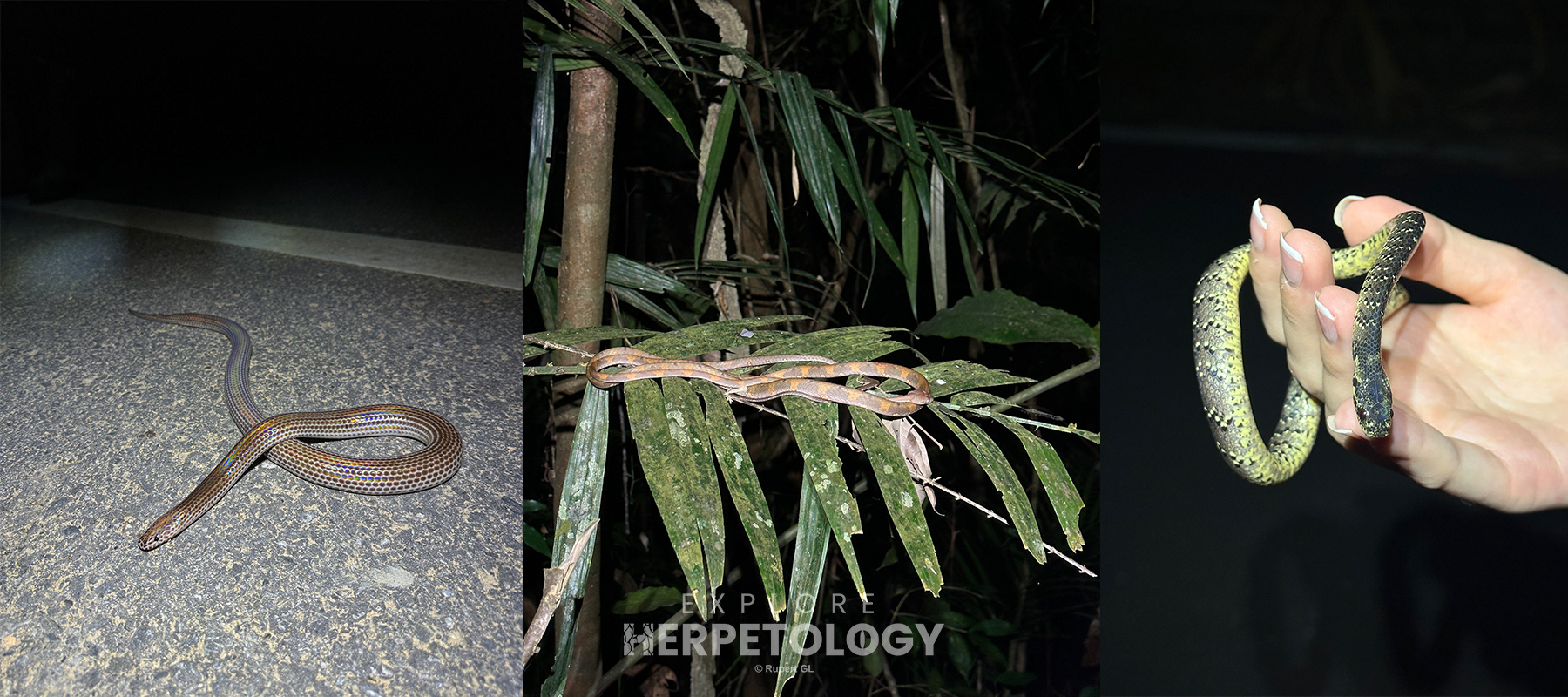
Left to right: Xenopeltis unicolor, Boiga drapiezii, Pareas cf. macularius.

Oriental vine snake (Ahaetulla prasina).

White-spotted slug snake (Pareas margaritophorus).

Malayan banded wolf snake (Lycodon subcinctus).

Speckle-bellied keelback (Rhabdophis chrysargos).

Scarce wolf snake (Lycodon effraenis).
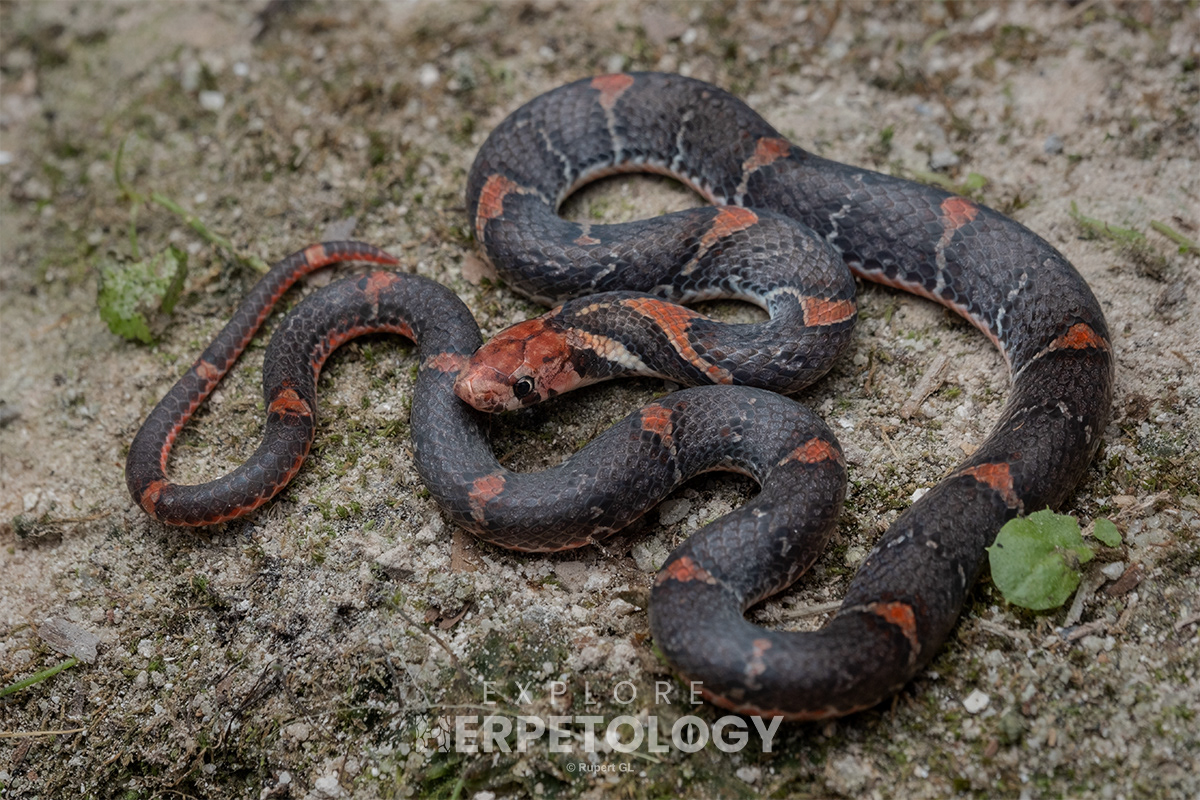
Rusty-barred kukri snake (Oligodon signatus).
Bang Lang
After two relatively quiet nights in the upper-dipterocarp forests, it was on to the upland forests of Bang Land, arguably our most productive location for elapids across all our time herping in Thailand - without a shortage for pit vipers too! Our first night here did not disappoint, with two huge adult female Wagler's pit vipers (Tropidolaemus wagleri) making an appearance. These are one of the most iconic species of viper in the region, and this area in particular regularly turns up large adults for us. Another major target of the trip was encountered this evening while road cruising, a large and stocky reticulated python (Malayopython reticulatus), along with a purple kukri snake (Oligodon purpurascens) and a few repeat species.
Unfortunately, Rupert was somewhat unwell during these few days which limited the amount of jungle hiking the group could do, but road cruising was consistently productive (as it was throughout the trip) and the following night we encountered our third golden Sumatran cobra (Naja sumatrana) of the trip. Seeing one cobra on a South-East Asia based herping trip is already remarkable, and we doubt we will ever see 3 Naja in one trip again. Truly remarkable luck!
We saw tons of other snakes during these nights in Bang Lang, but new species for our trip count and our absolute number one target for the area (red-headed krait) was proving hard to come by. We saw many Boiga sp, some turtles, nice frogs and even a roughneck monitor (Varanus rudicollis) crossing the road in the daytime. It wasn't until the very final night in Yala that things got crazy, starting with a wild Sunda pangolin encounter (Manis javanica) and ending, right before the group got back to the car to finish the trip, with a truly giant red-headed krait (Bungarus flaviceps) crossing the trail. This individual measured in at 193cm in length, truly remarkable and possibly even a species record. What a way to end our time in Yala!
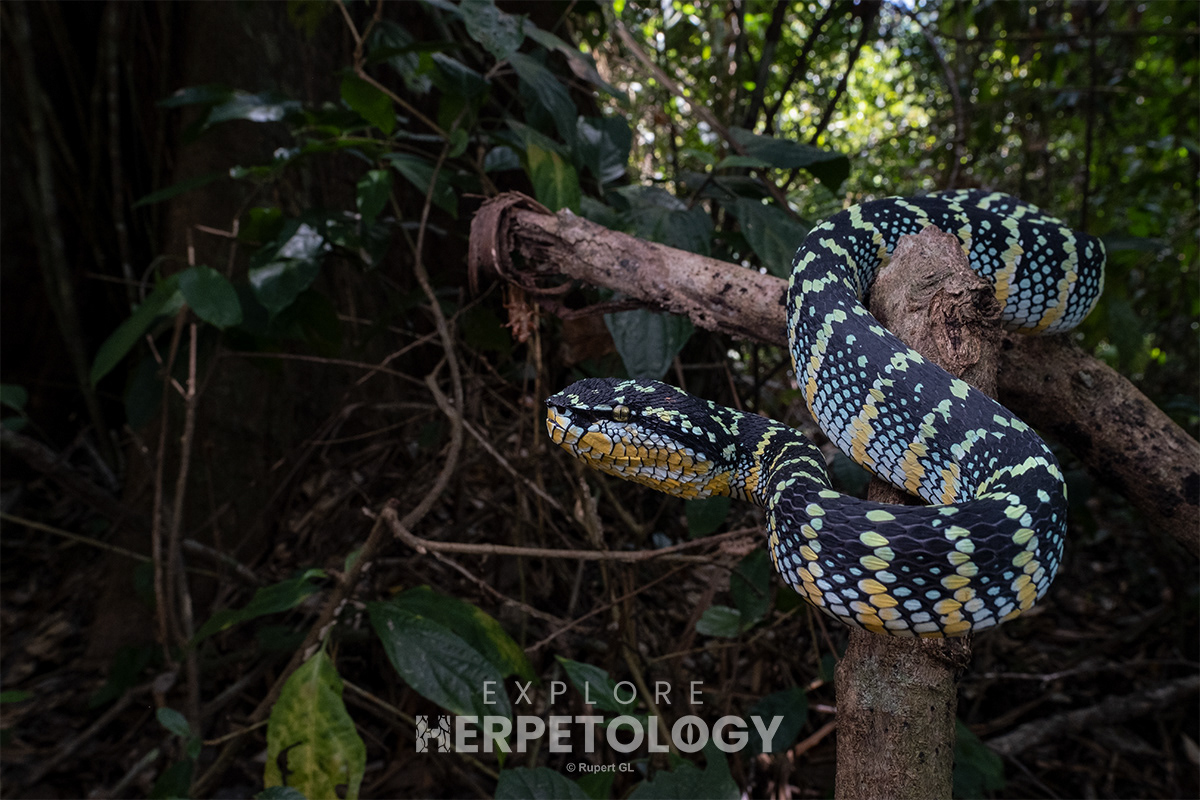
Wagler's pit viper (Tropidolaemus wagleri).
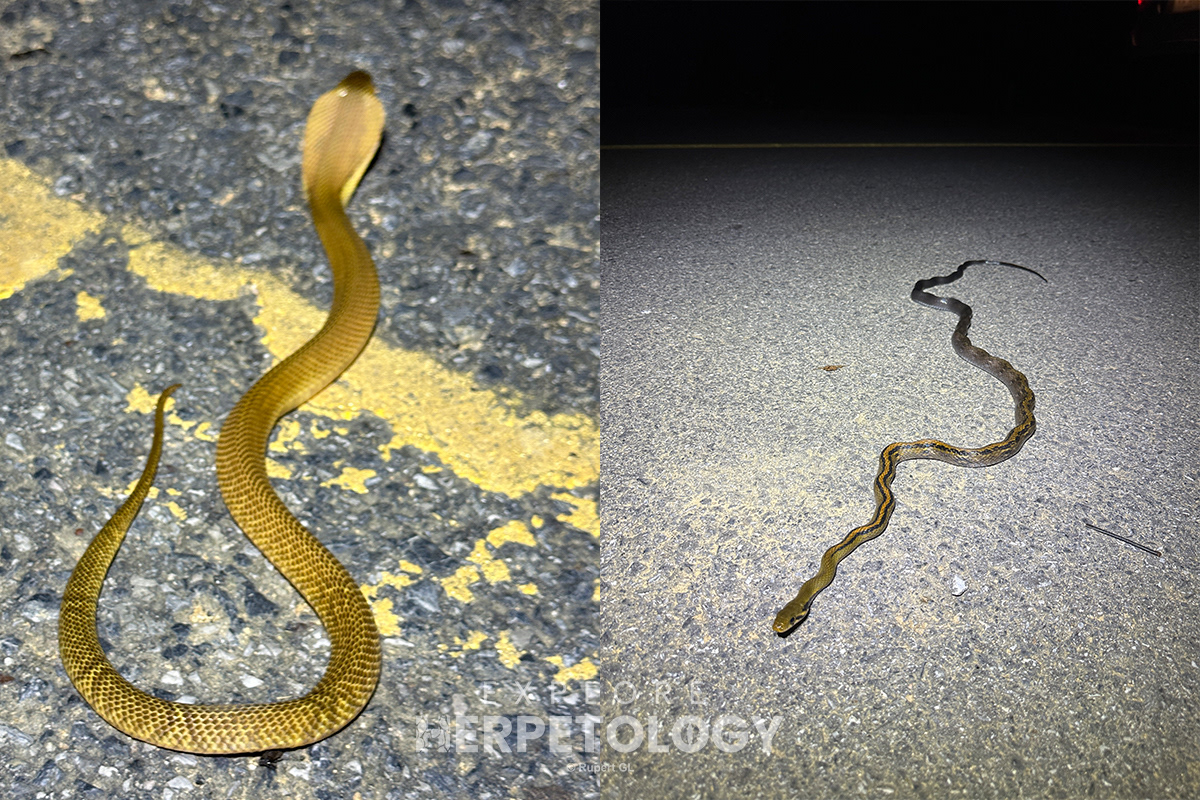
Left: Naja sumatrana. Right: Coelognathus flavolineatus.
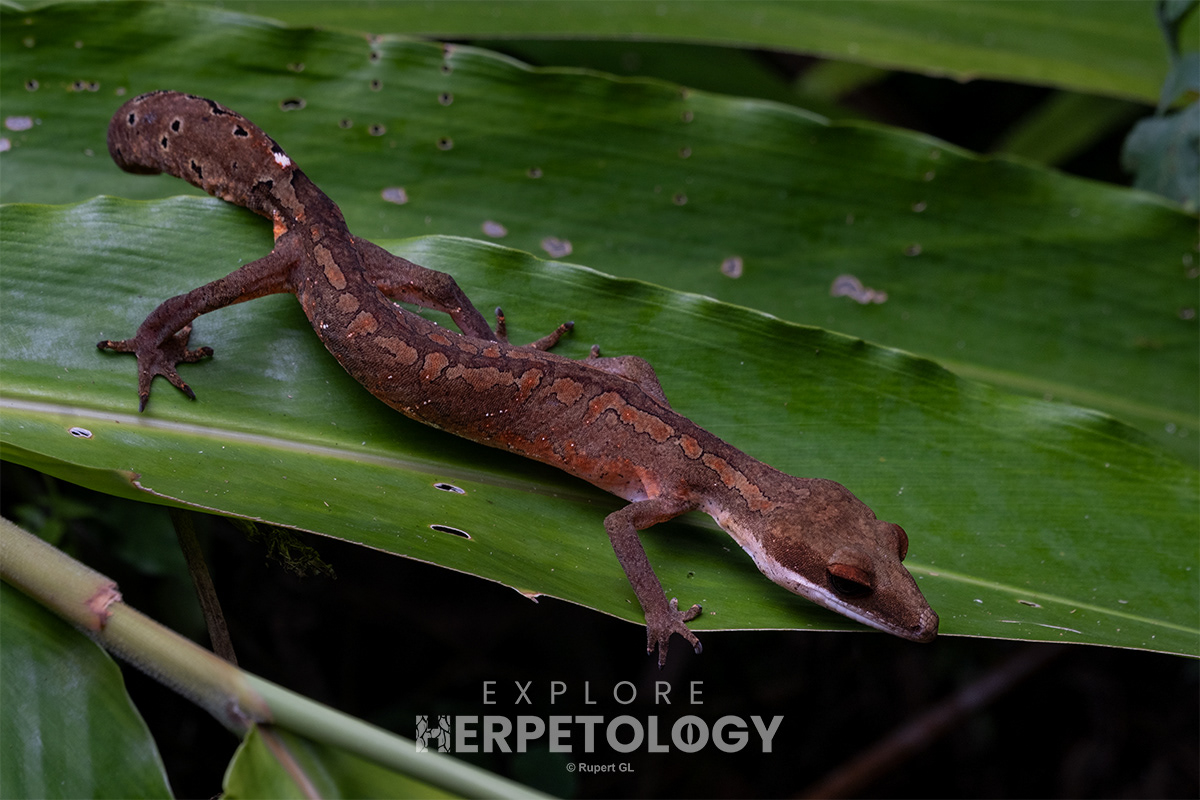
Cat gecko (Aleuroscalabotes felinus).
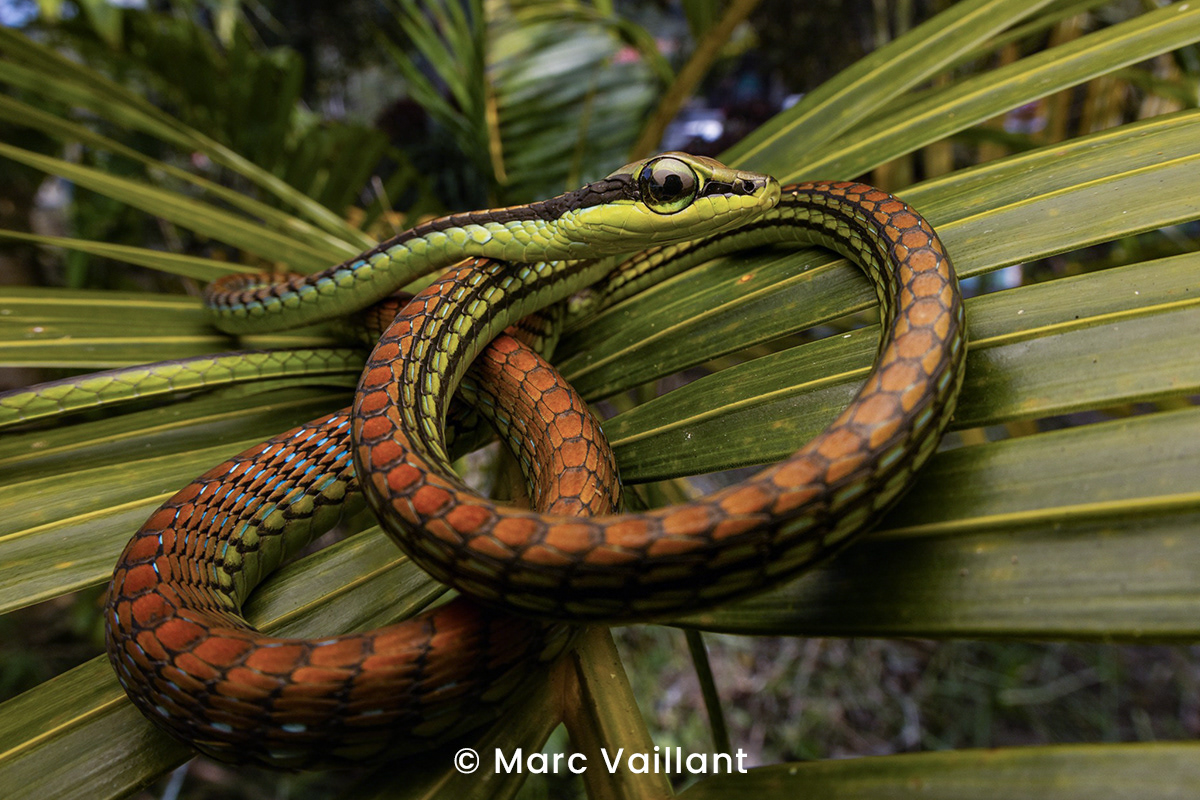
Elegant bronzeback (Dendrelaphis formosus).
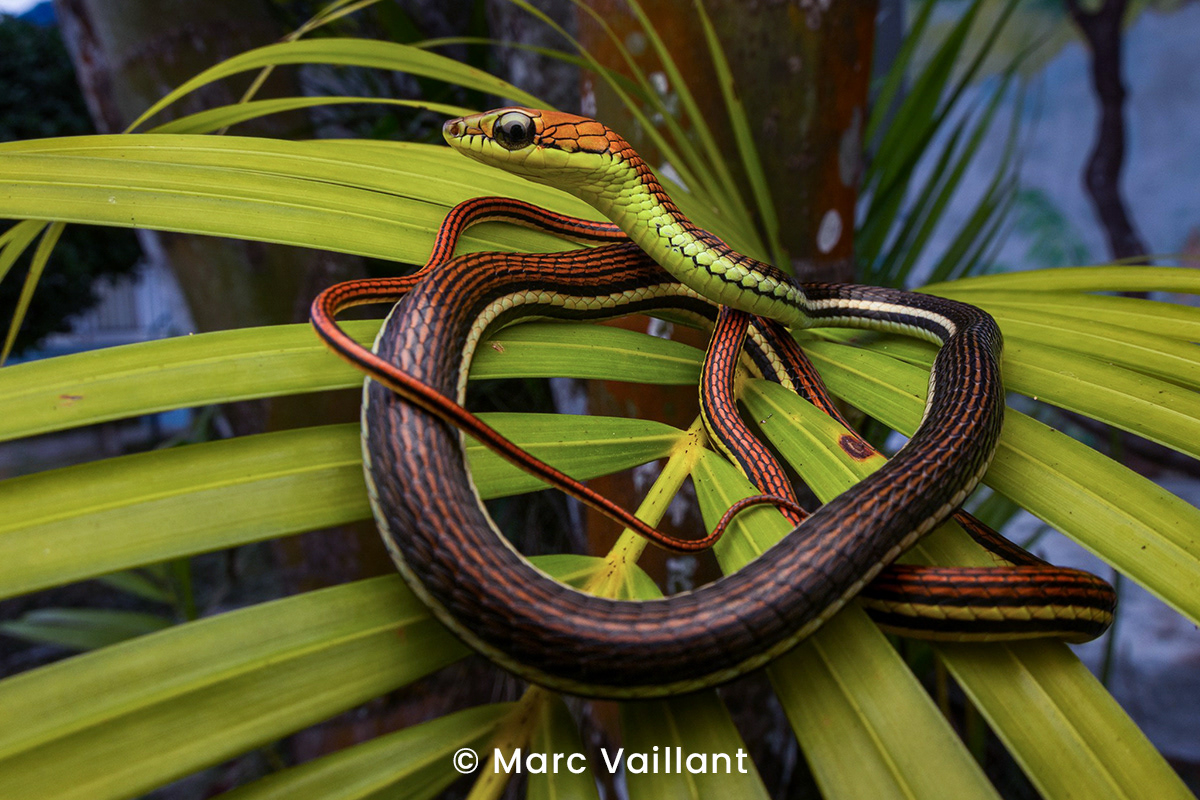
Striped bronzeback (Dendrelaphis caudolineatus).

Left: Oligodon purpurascens. Right: Notochelys platynota.

Bintang lowland bent-toed gecko (Cyrtodactylus bintangrendah).
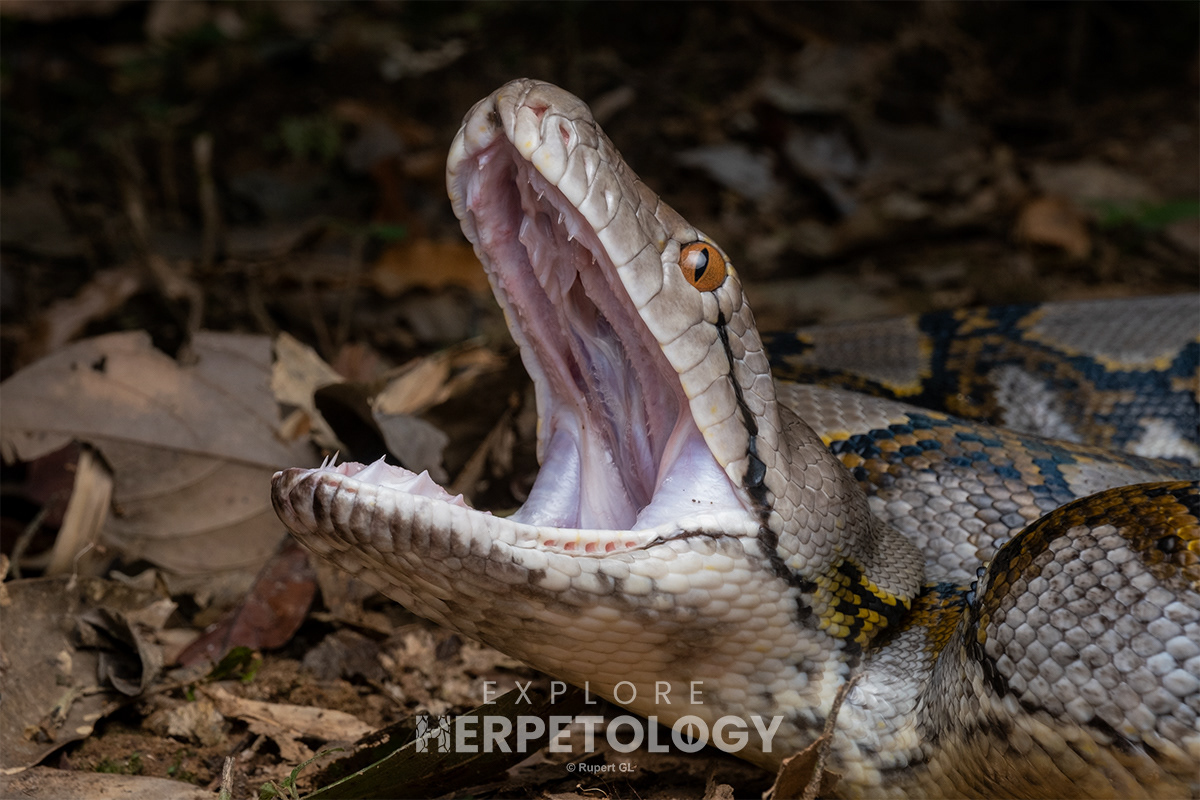
Reticulated python (Malayopython reticulatus).
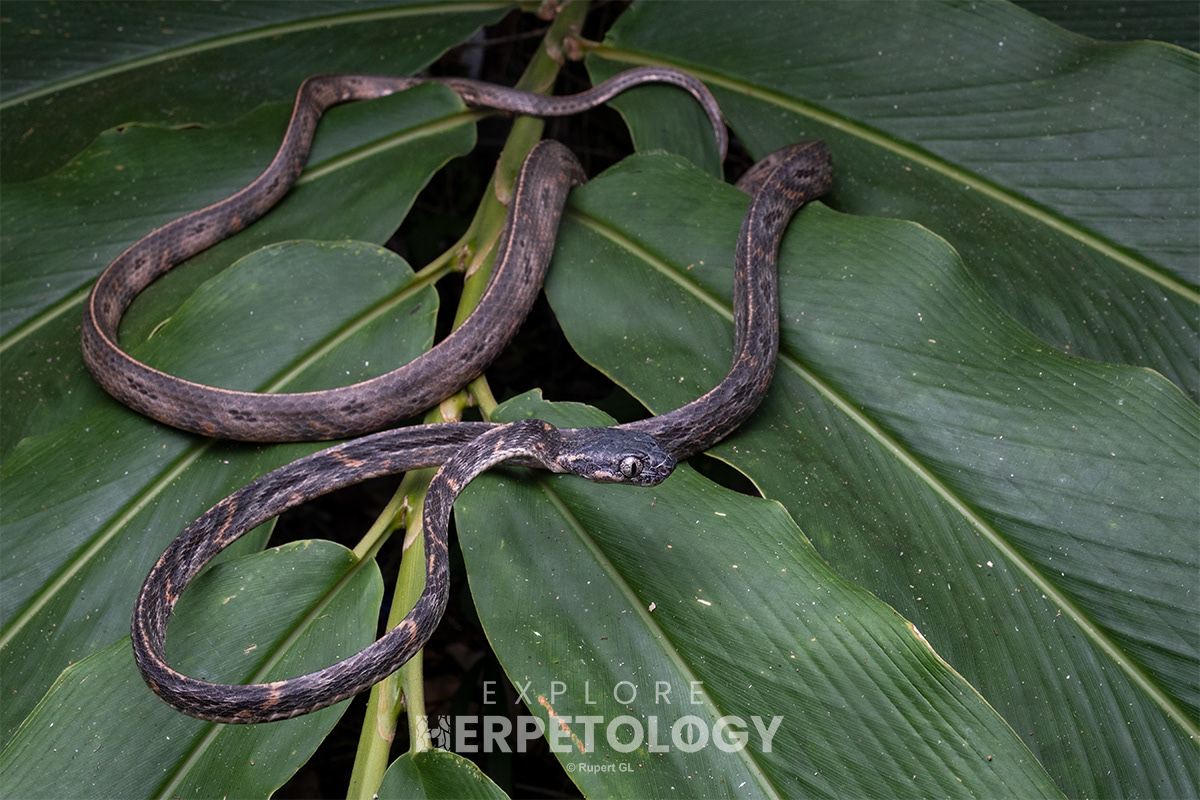
Bengkulu cat snake (Boiga bengkuluensis).
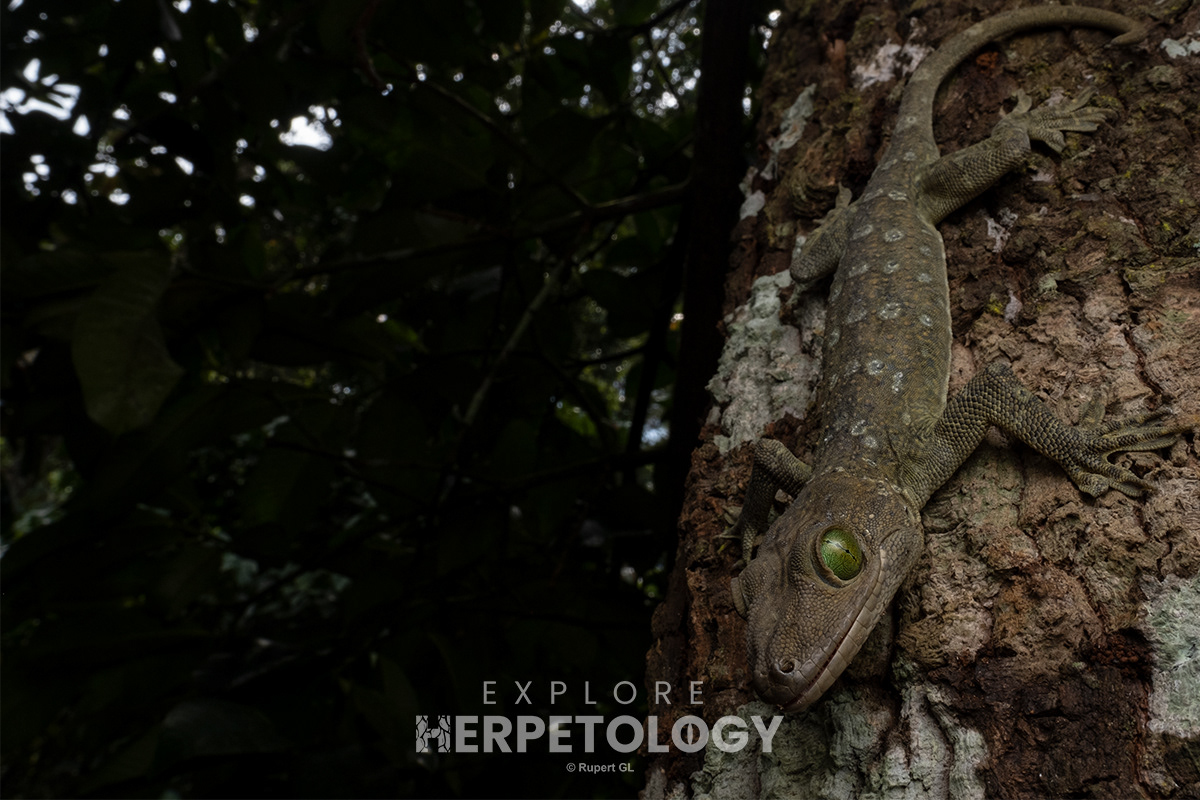
Smith's green-eyed gecko (Gekko smithi).
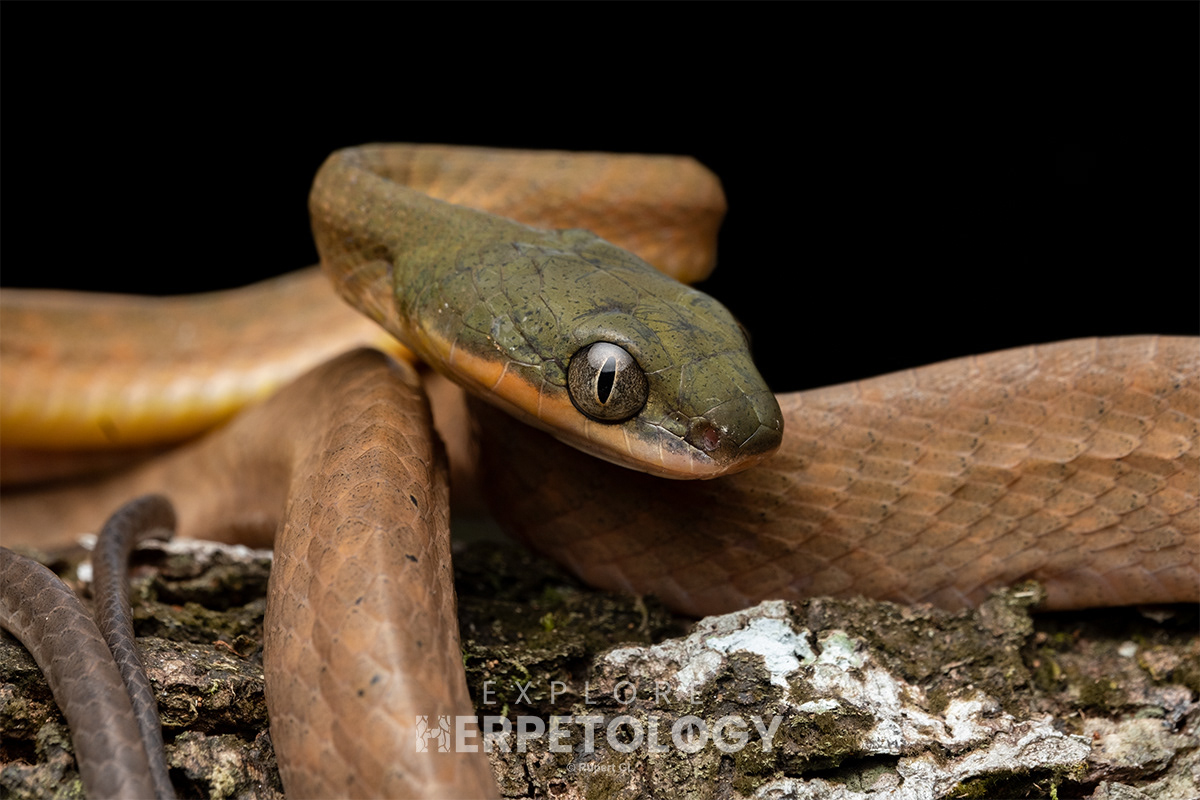
Dark-headed cat snake (Boiga nigriceps).
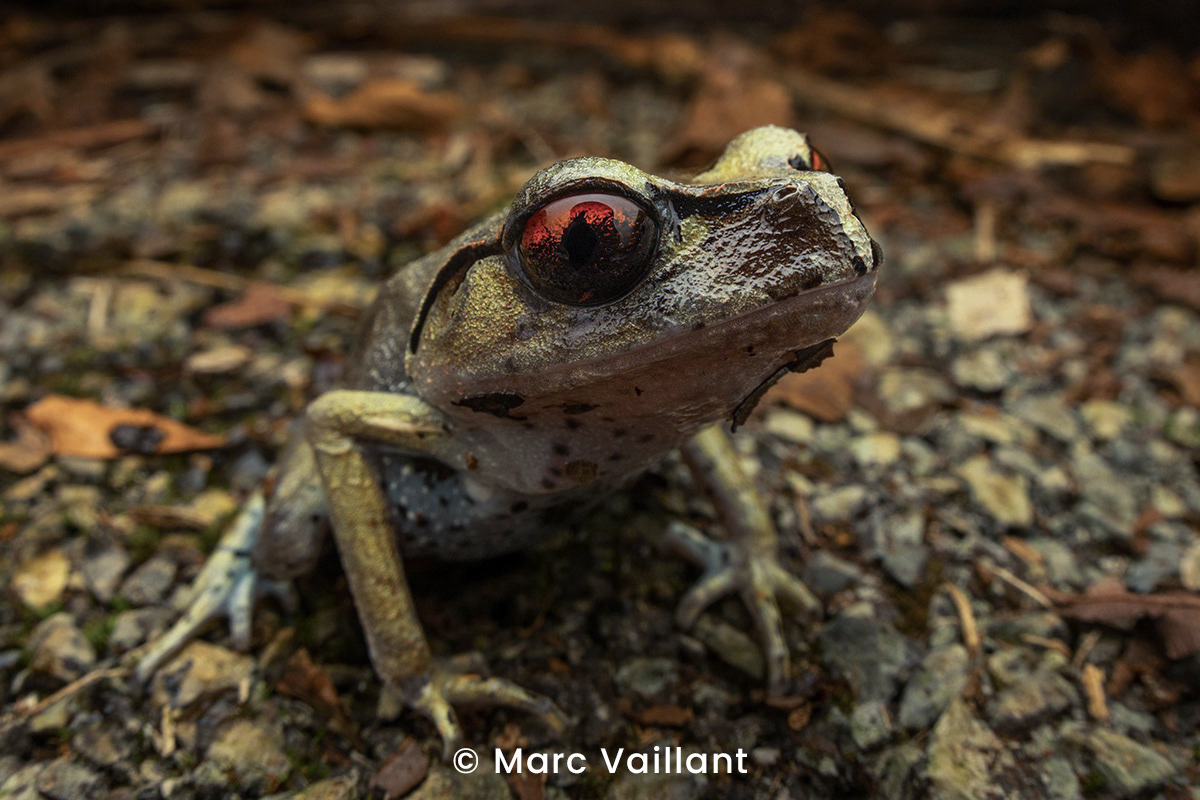
Hendrickson's litter frog (Leptobrachium hendricksonii).

Wagler's pit viper (Tropidolaemus wagleri).
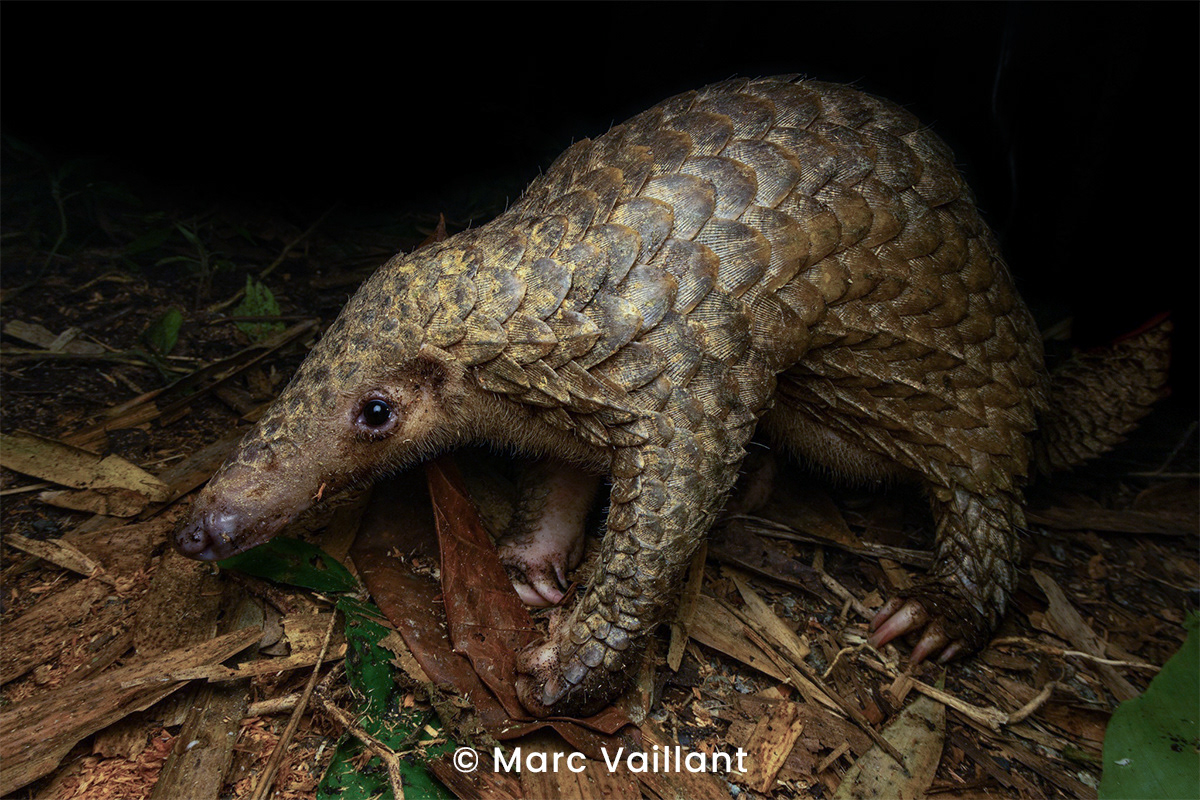
Sunda pangolin (Manis javanica).
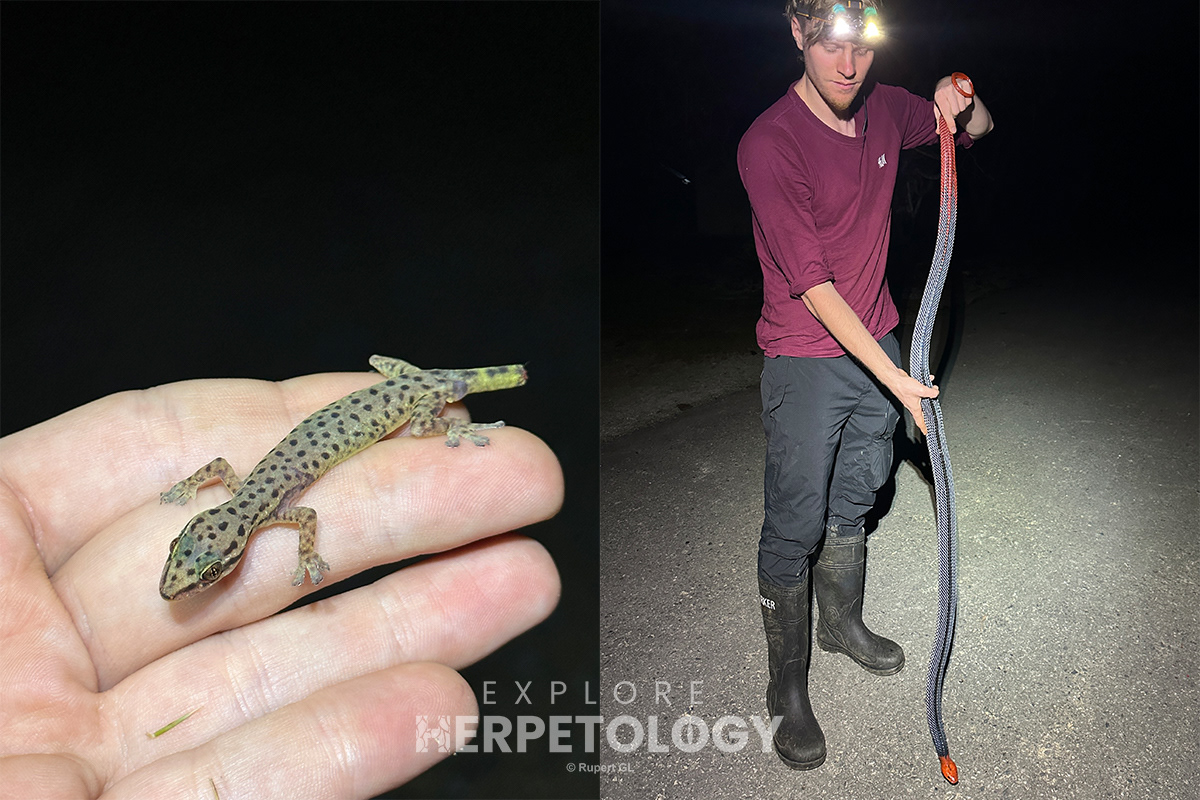
Left: Hemiphyllodactylus pardalis. Right: Rupert with Bungarus flaviceps.
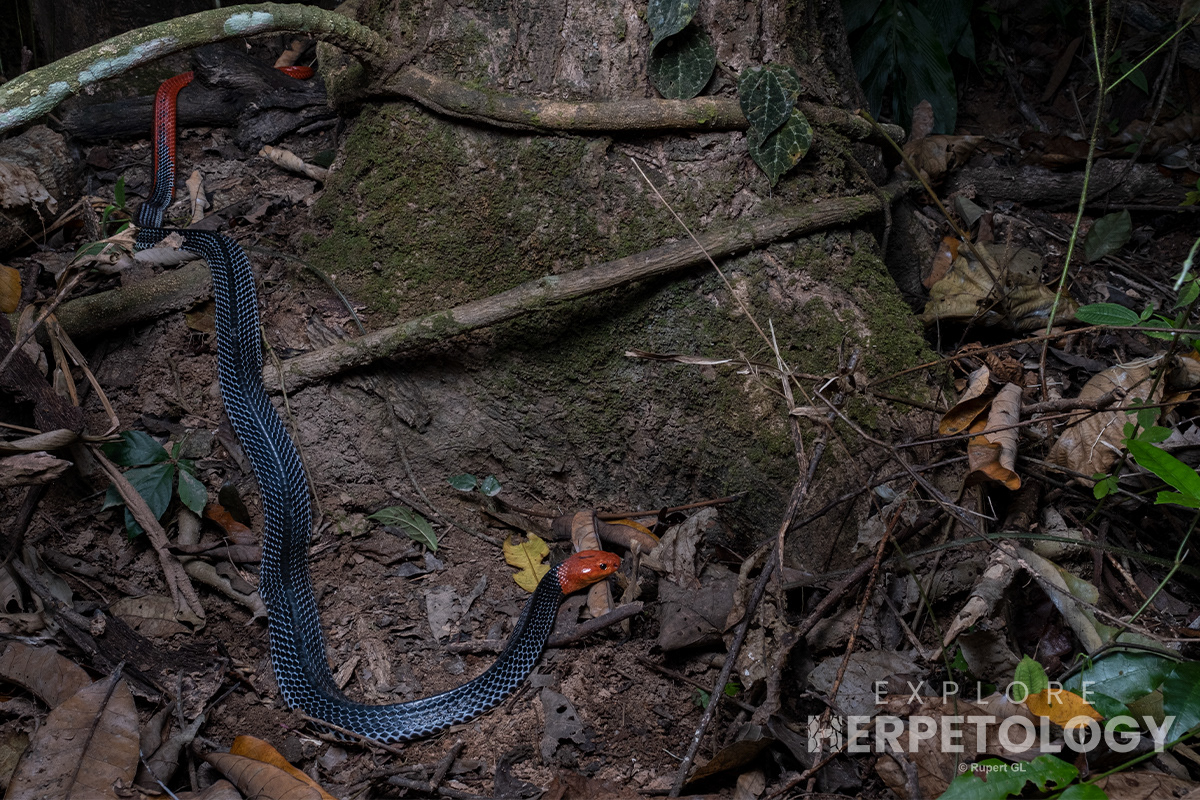
Red-headed krait (Bungarus flaviceps).
Hat Yai
We returned from Bang Lang on the final day of the trip to Hat Yai city, to unwind with some more relaxed herping in the drier forests on the edges of town. After a delicious dinner at an Italian restaurant, we went out walking and quickly found a new species for the trip, a painted bronzeback (Dendrelaphis pictus). Not long after, we found another large female Wagler's pit viper (Tropidolaemus wagleri), although this one was gravid so we did not take anything other than some quick phone photos. Along with many oriental vine snakes (Ahaetulla prasina) and a few white-spotted slug snakes (Pareas margaritophorus), we also found a few puff-faced water snakes (Homalopsis buccata), one of which had interesting pink-tinted bands.

Painted bronzeback (Dendrelaphis pictus).

Left: Wagler's pit viper (Tropidolaemus wagleri). Right: Batanes prasse (Ahaetulla prasina).
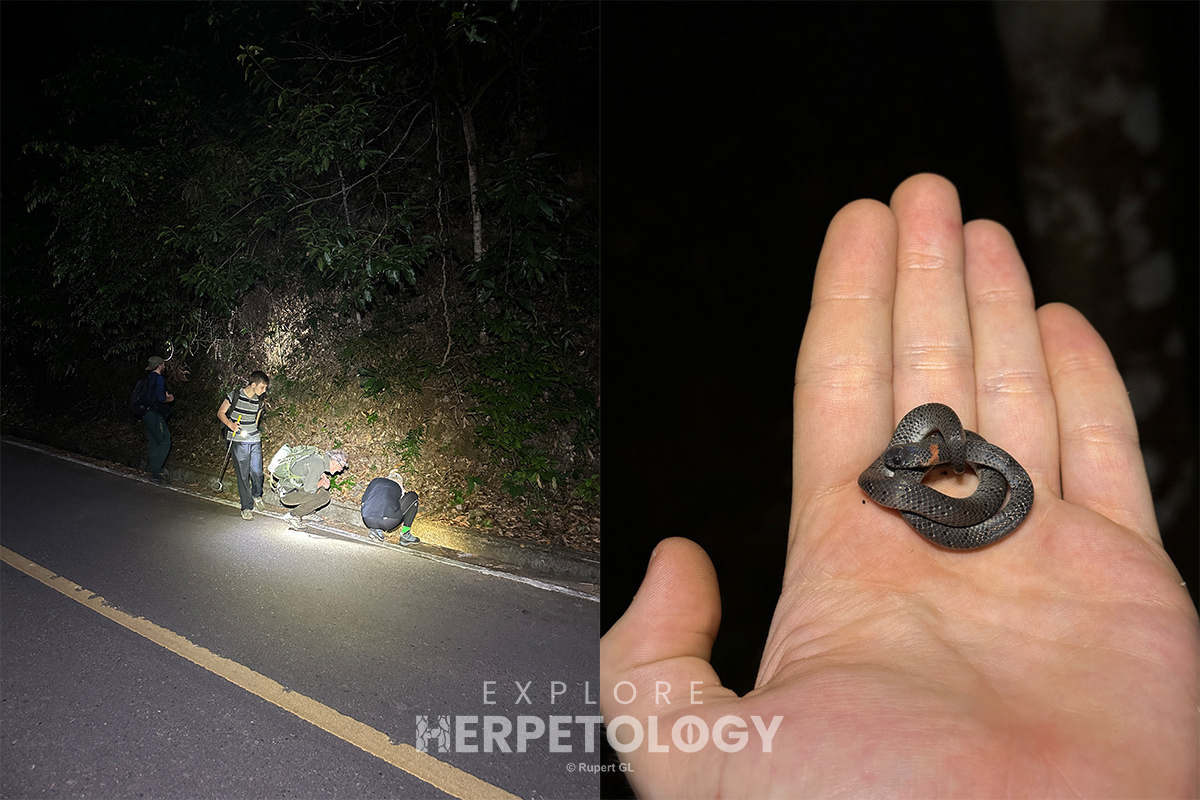
Pareas margaritophorus dug out from leaf litter.
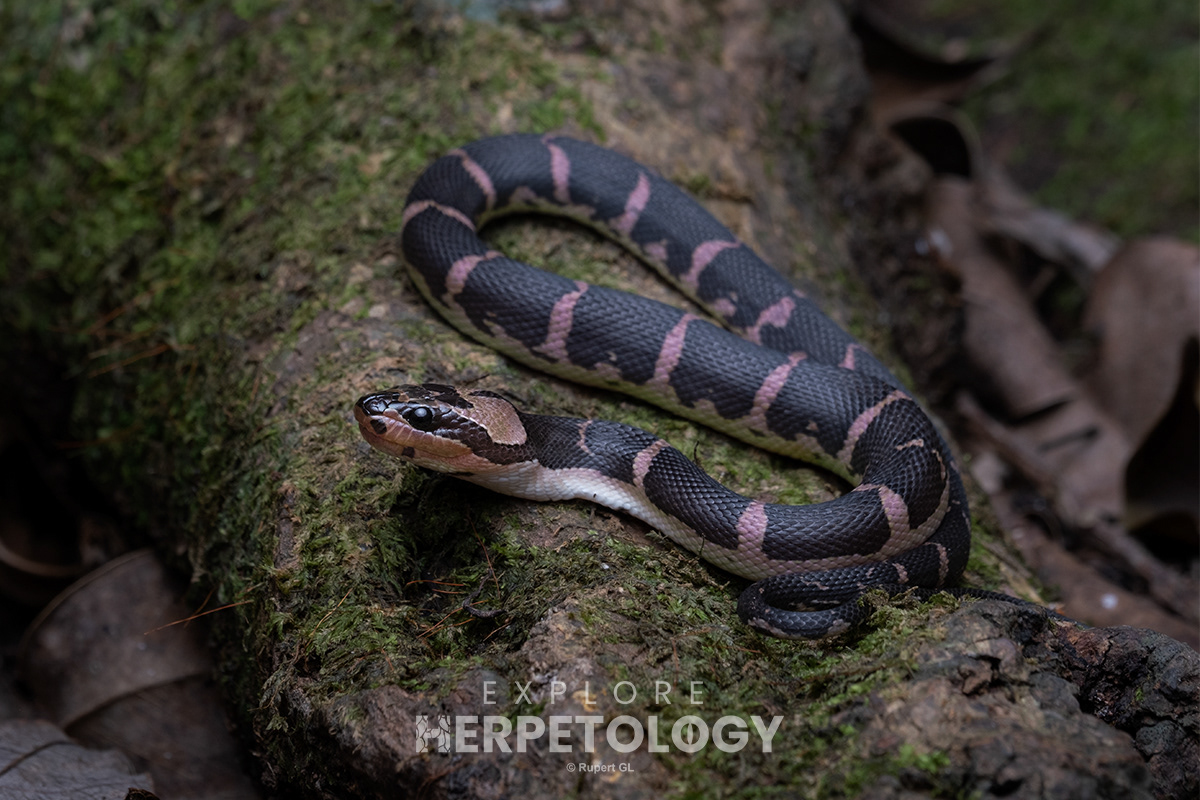
Puff-faced water snake (Homalopsis buccata).
With countless fantastic encounters from start to finish, Expedition Yala lived up to last year's lofty expectations and beyond, with different species appearing as well as many of the area's top targets. We are heading back to the area again in 2024, this time in the rainy season where we expect similar levels of productivity amongst the region's most biodiverse rainforests. Book now!


